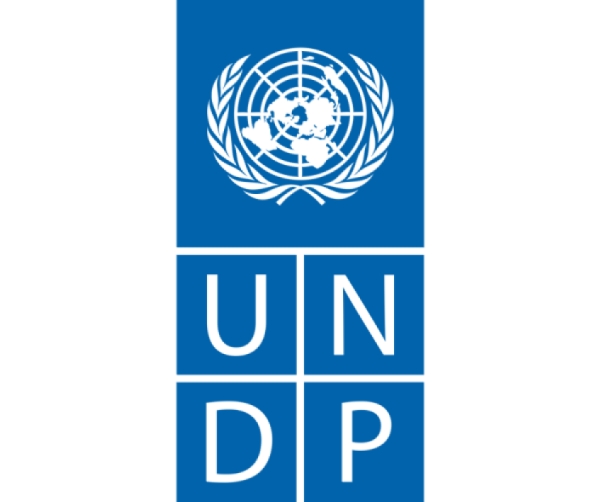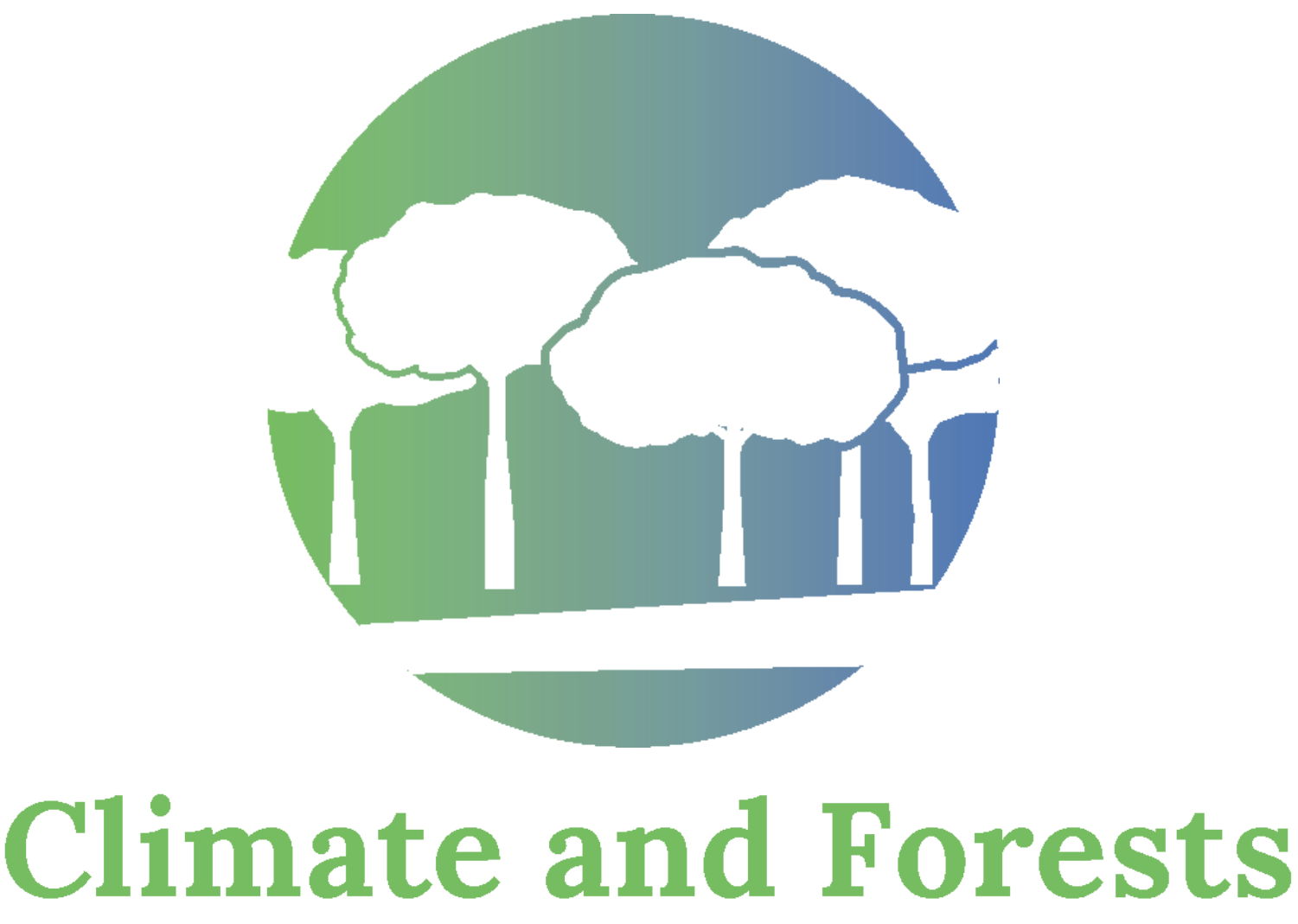Roots of resilience
A journey to restore the mangroves of West Java
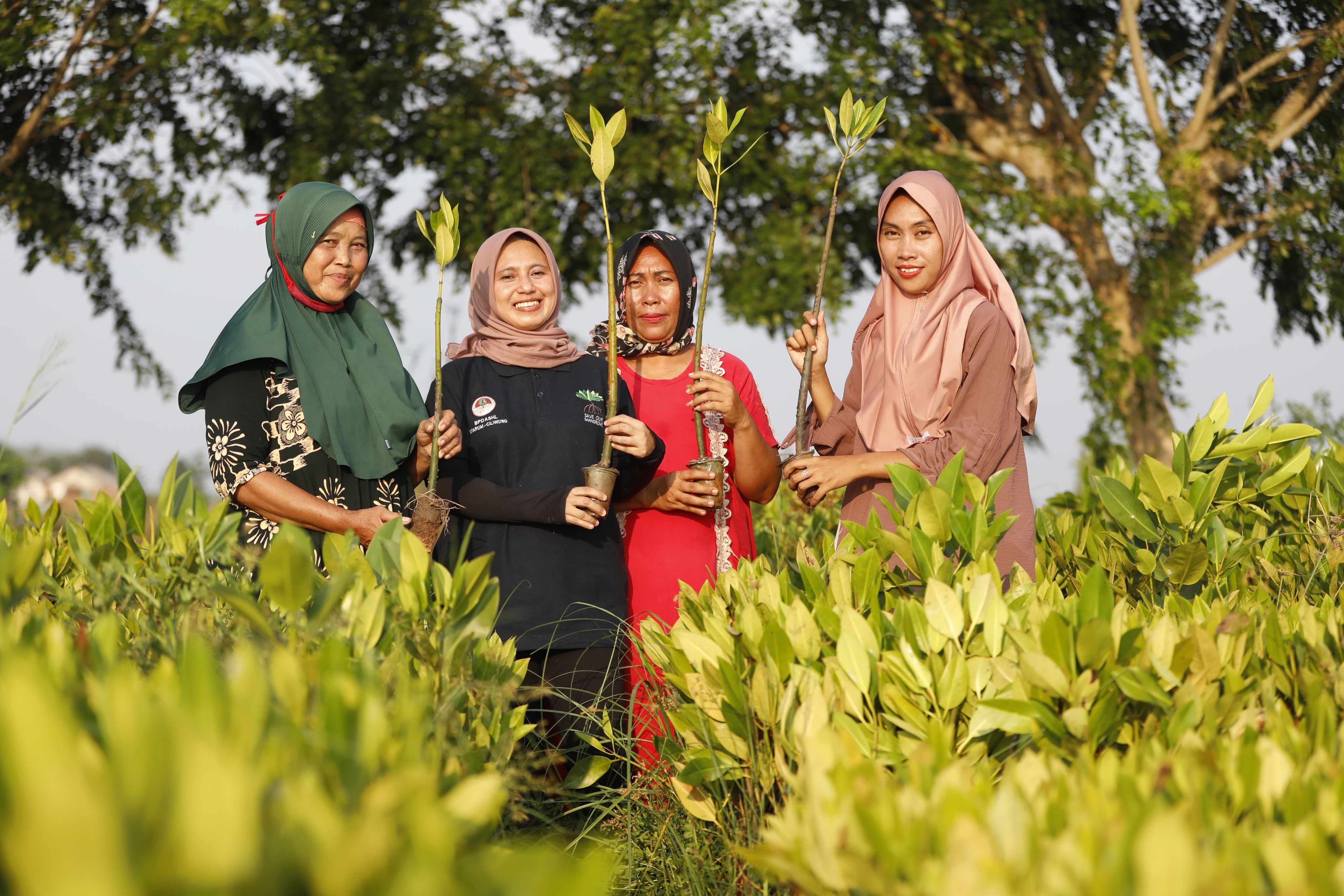
Beach huts selling Ikan goreng and other fried fish specialties line the beach of Sedari, on the northern coast of the Indonesian island of Java. Roughly 100 km northeast of Jakarta, this laid-back fishing village is popular with capital city dwellers desperate for a fresh sea breeze. Yet the village’s seemingly peaceful appearance can be deceptive: Sedari, like other coastal villages in West Java and elsewhere in Indonesia are already suffering from the impacts of climate change, including coastal erosion and constant sea level rise.
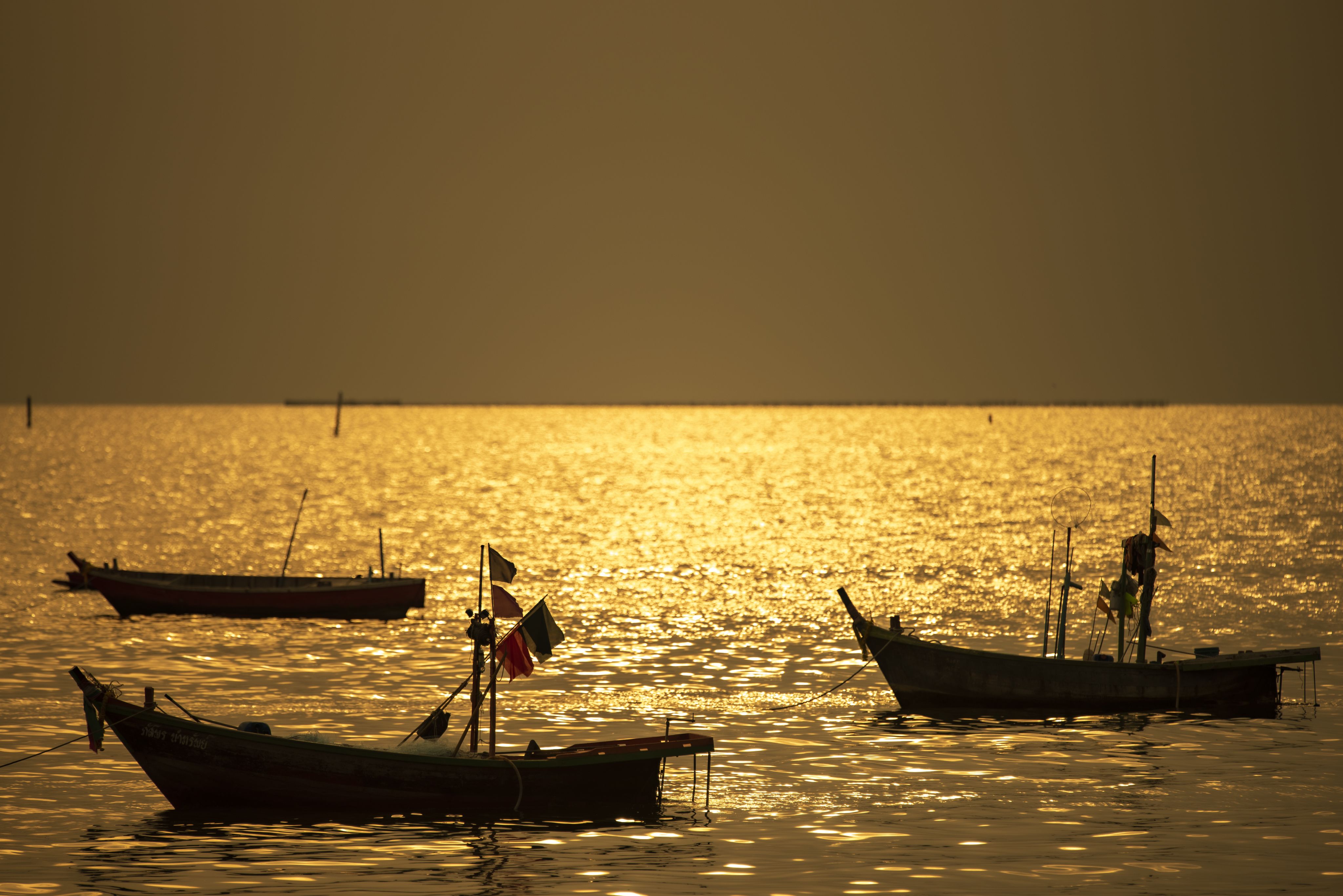
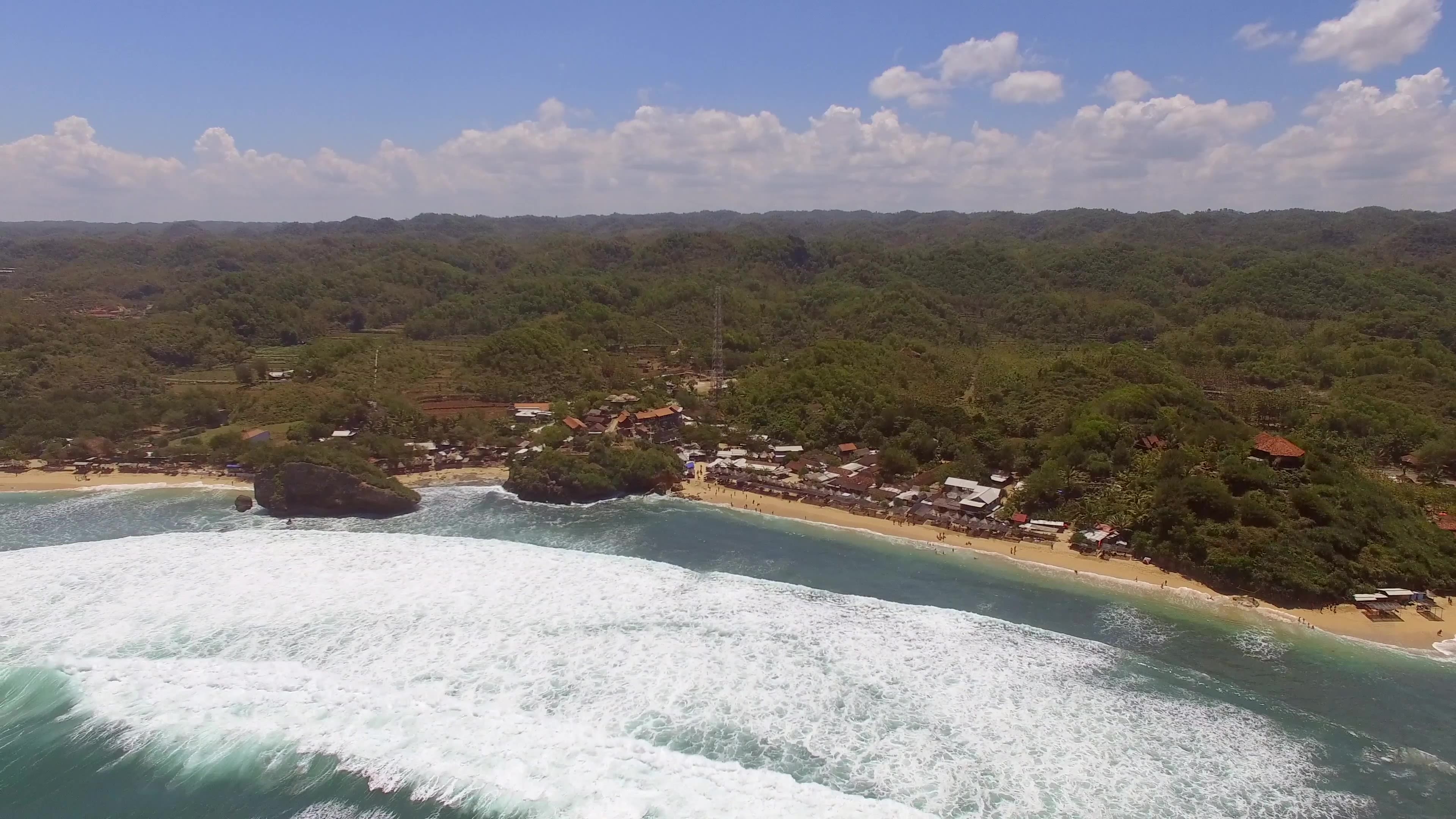
To overcome this enormous challenge, village head Bisri Mustofa realized that long-held beliefs need to change: “At first, it was very difficult to make people understand the essential role of the mangroves. But with a lot of trust in the community, it is possible to change mindsets.” Like everyone else in the village, Mustofa and his family earn their living by catching fish and prawn every day.
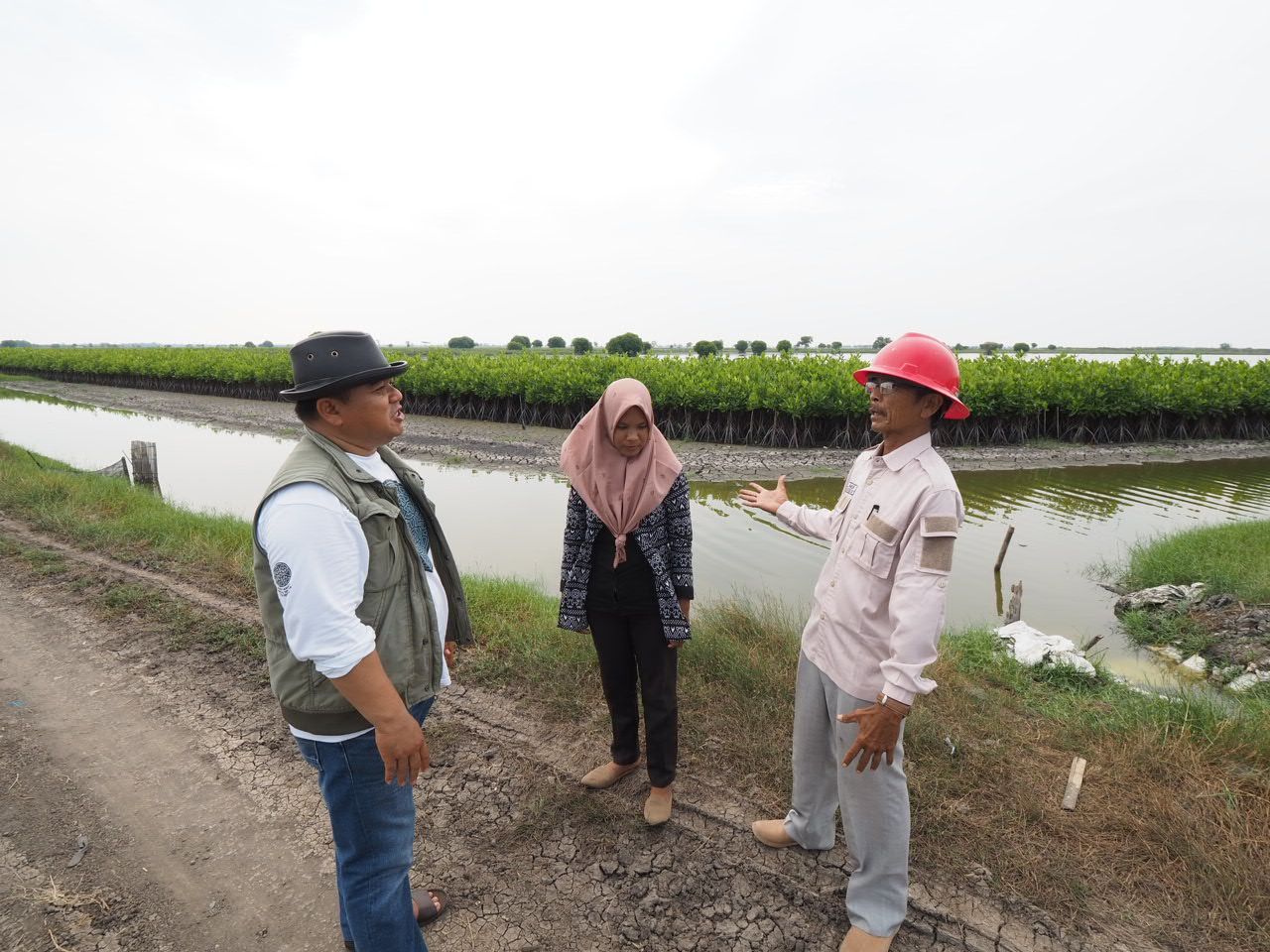
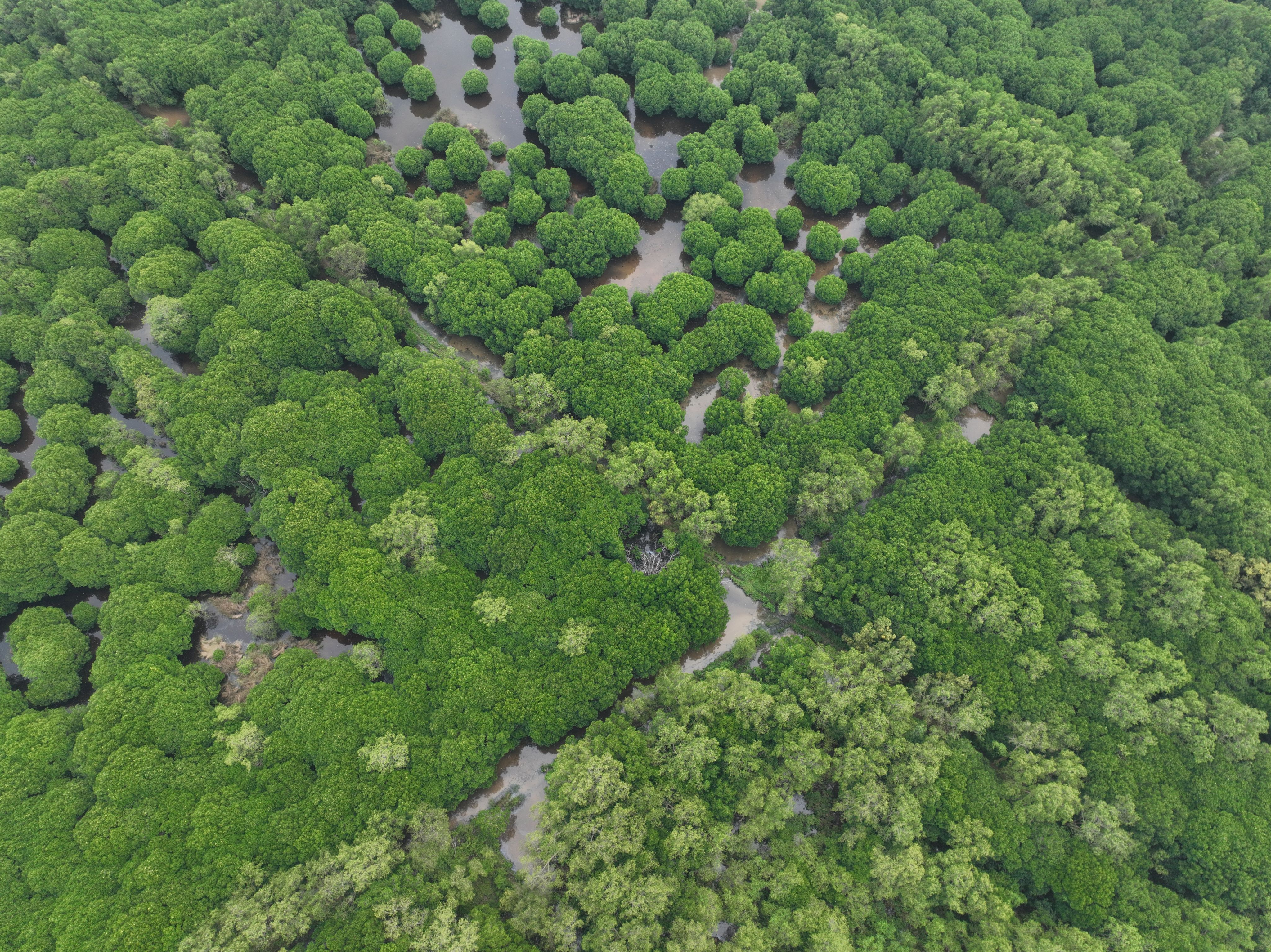
“Once the mangroves were gone, shrimp became scarce”
In Sedari and surrounding villages in West Java, where the primary source of income stems from shrimp farming, thickly rooted mangrove swamps lining the Citarum river and coastal areas were long seen as an impediment to economic development by the villagers. With skyrocketing demand for shrimp, Indonesia recently became one of the world's largest shrimp exporters. Many local shrimp farmers previously held the assumption that the conversion of mangrove forests would allow them to expand their operations and increase their production. Contrary to these expectations, the outcomes observed in Sedari and other coastal villages following the removal of mangroves presented a different scenario.
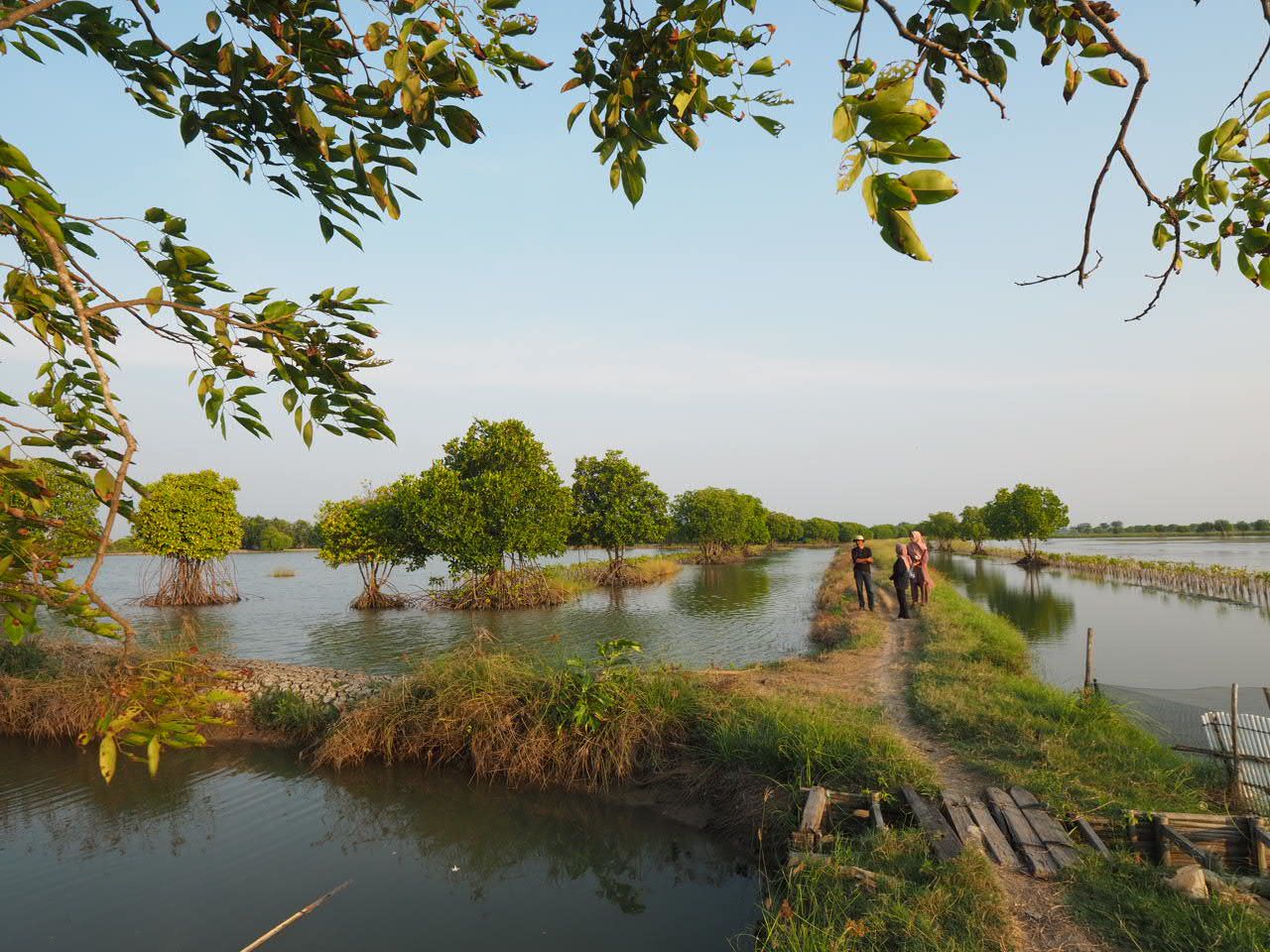
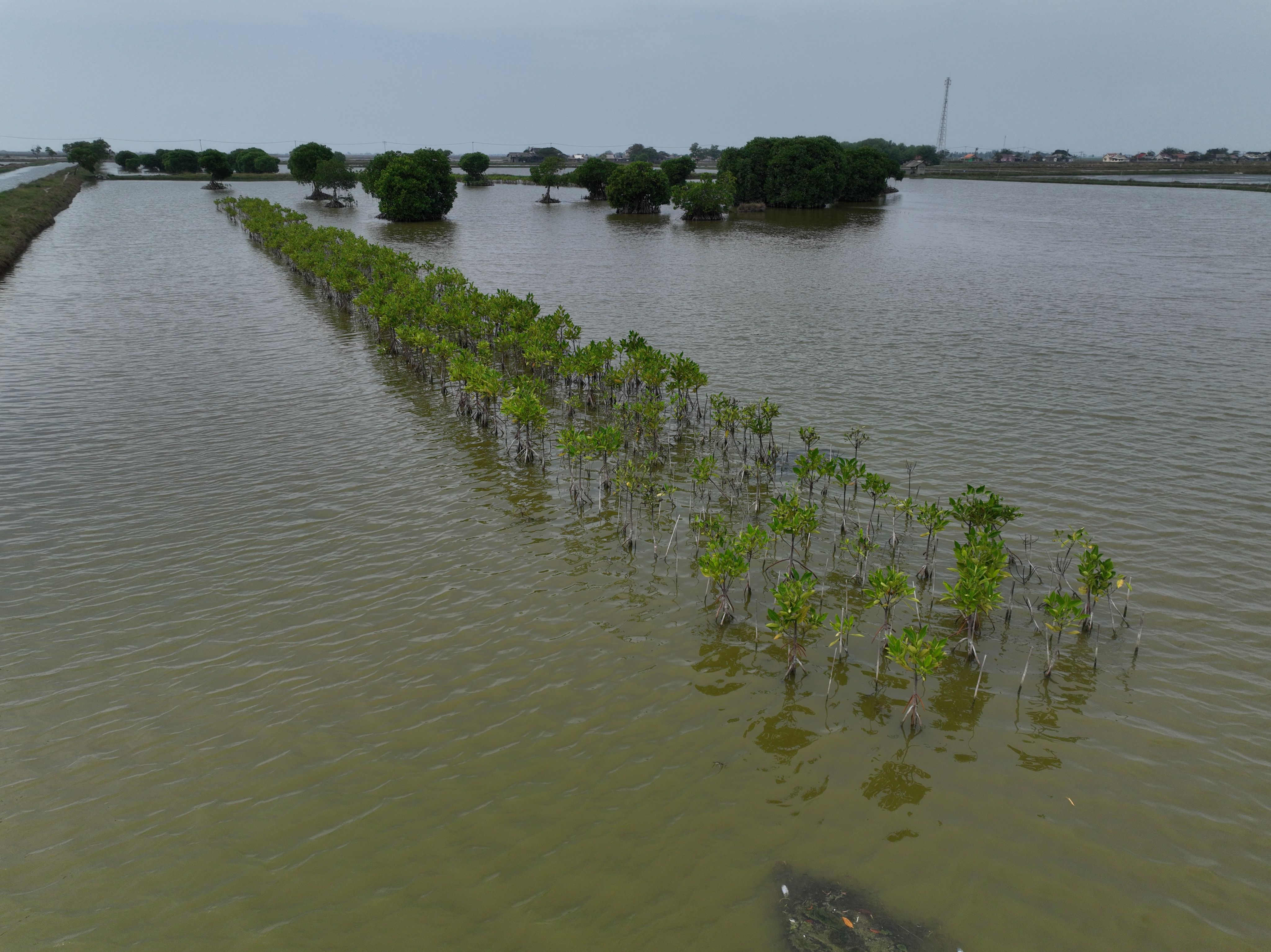
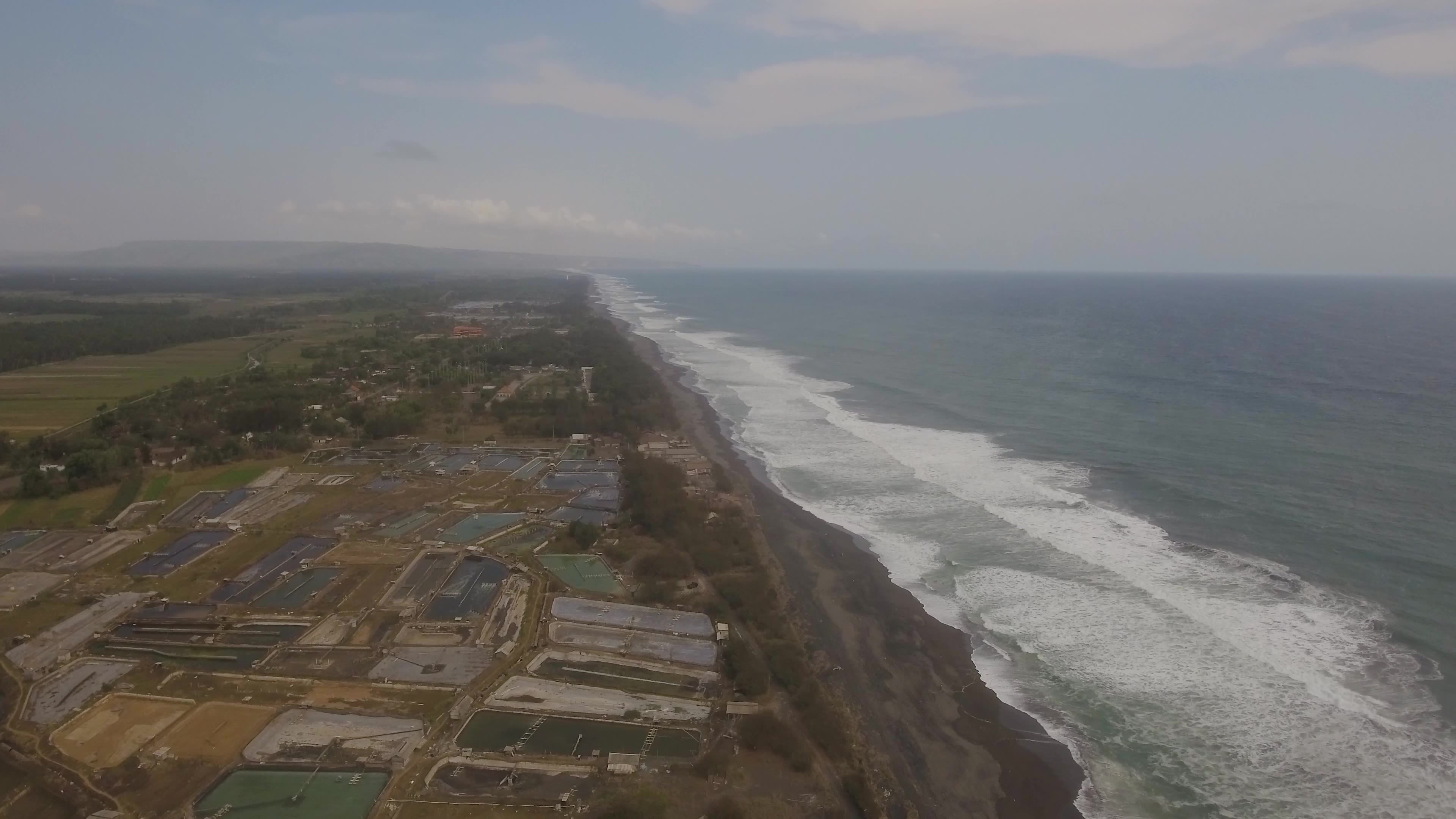
Ahmad Jayadi, the head of the Local Community service describes the consequences of mangrove clearance: “Before, when the mangroves were abundant, the shrimp also thrived. Once the mangroves were gone, the shrimp became scarce, and the growth of fish was not optimal. An explanation is the absence of food sources like plankton, which are typically attached to the mangrove roots. Additionally, research has shown that the removal of the mangroves led to a deteriorated water quality.”
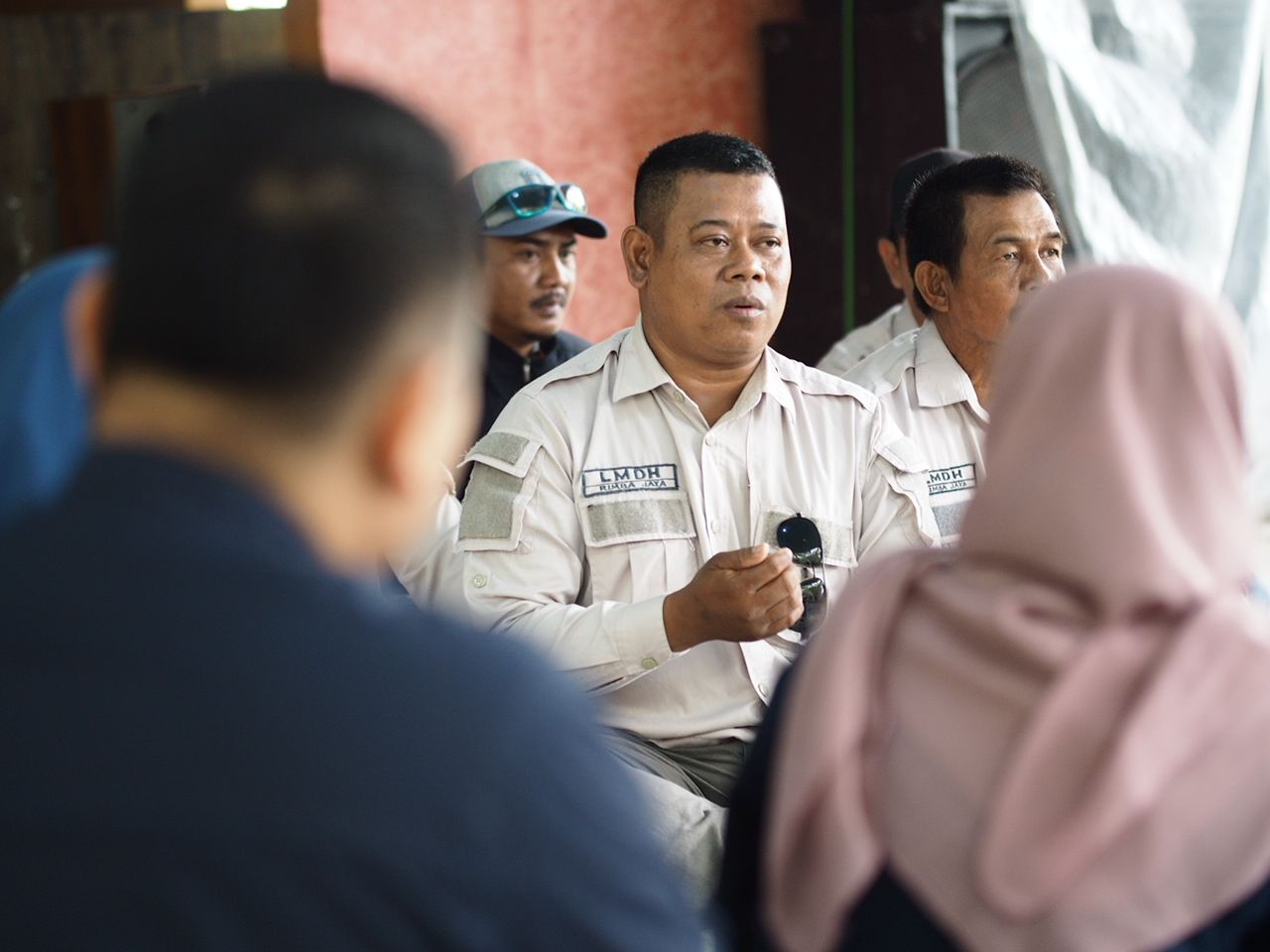
Ahmad Jayadi, head of the Local Community service in Sedari village, West Java.
Ahmad Jayadi, head of the Local Community service in Sedari village, West Java.
Roots of coastal resilience
In Sedari village, collaborative efforts to rehabilitate mangroves already started under Suharto, the second Indonesian President, who inaugurated the restoration site in 1991.
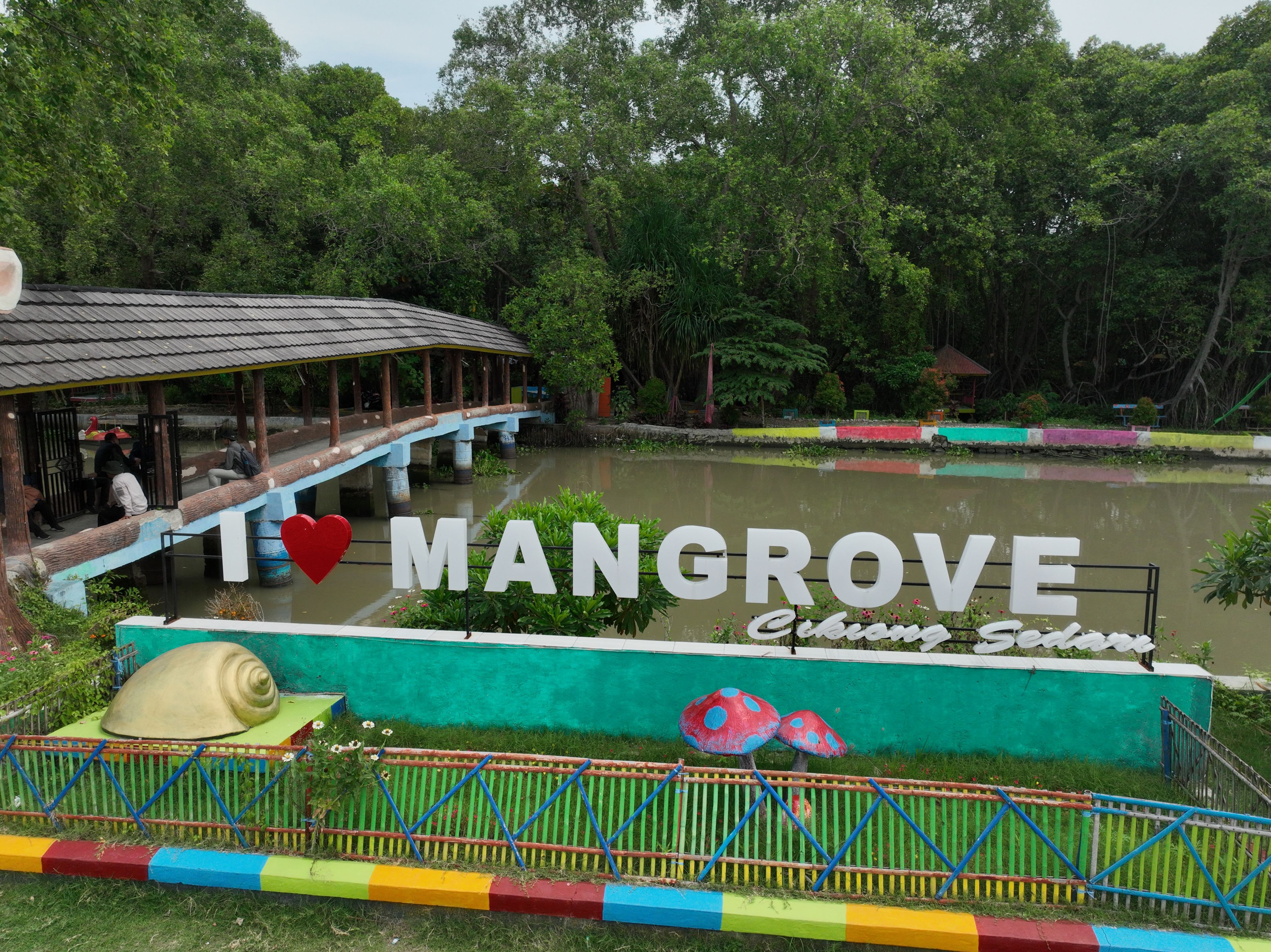
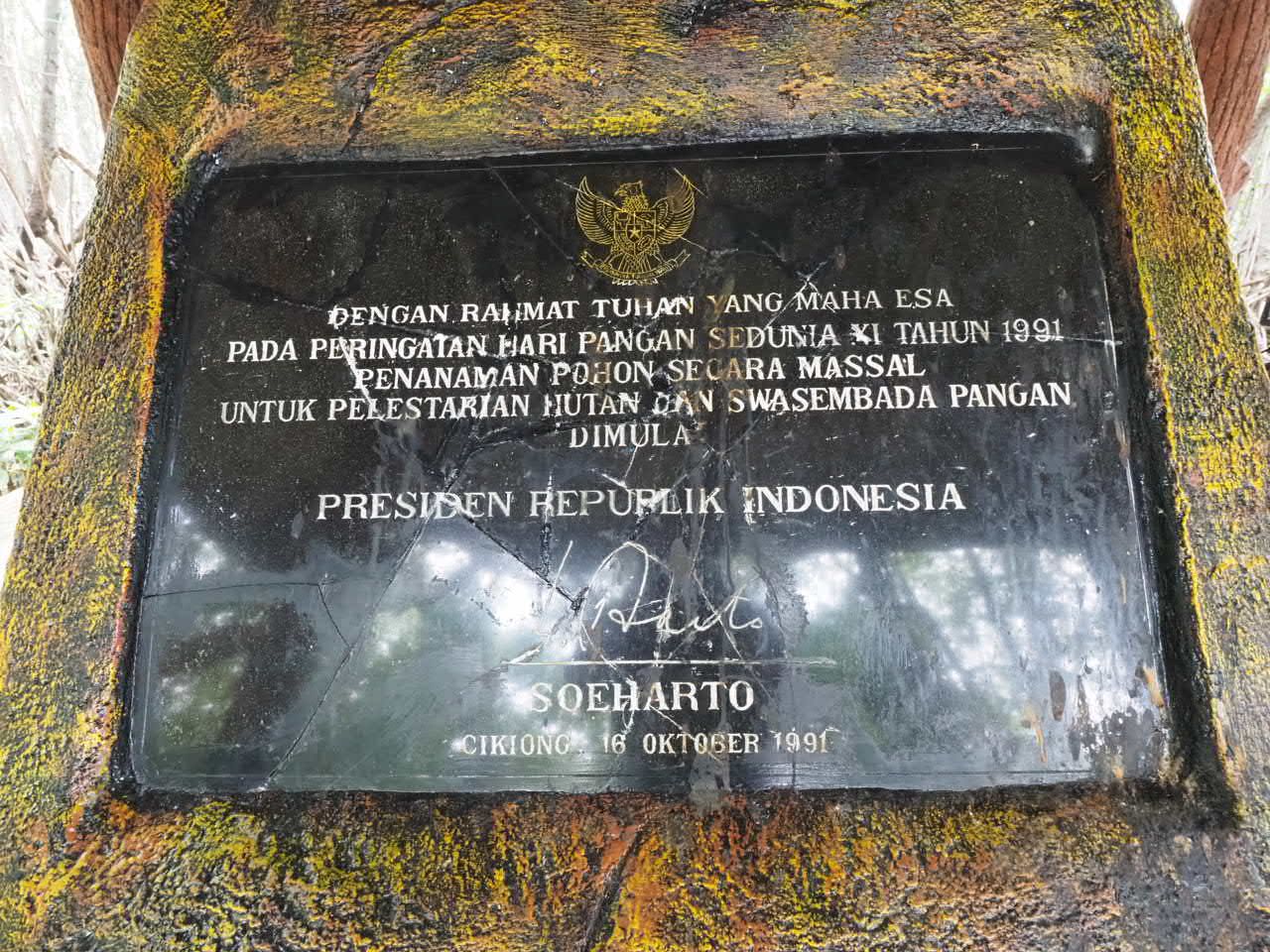
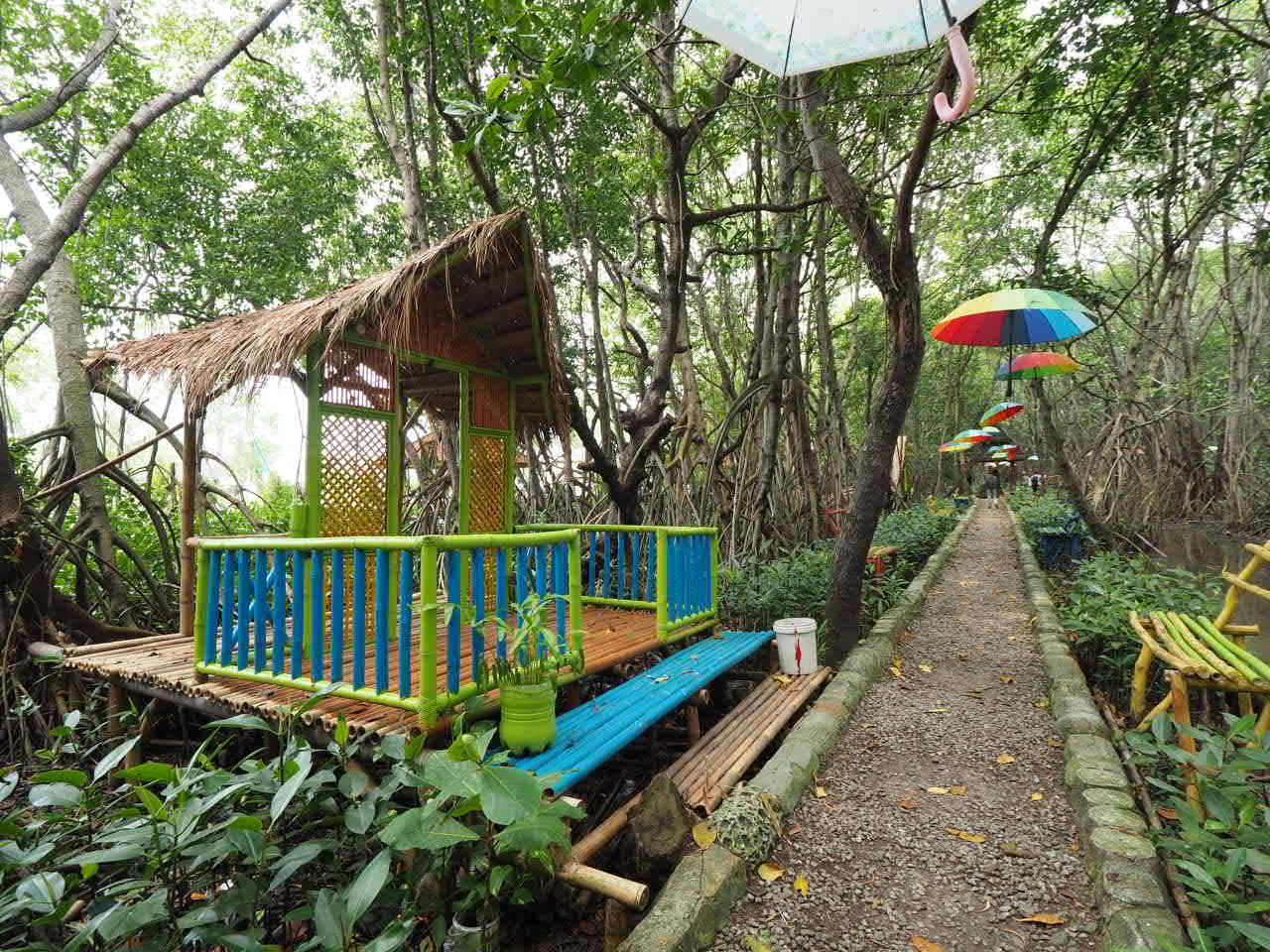
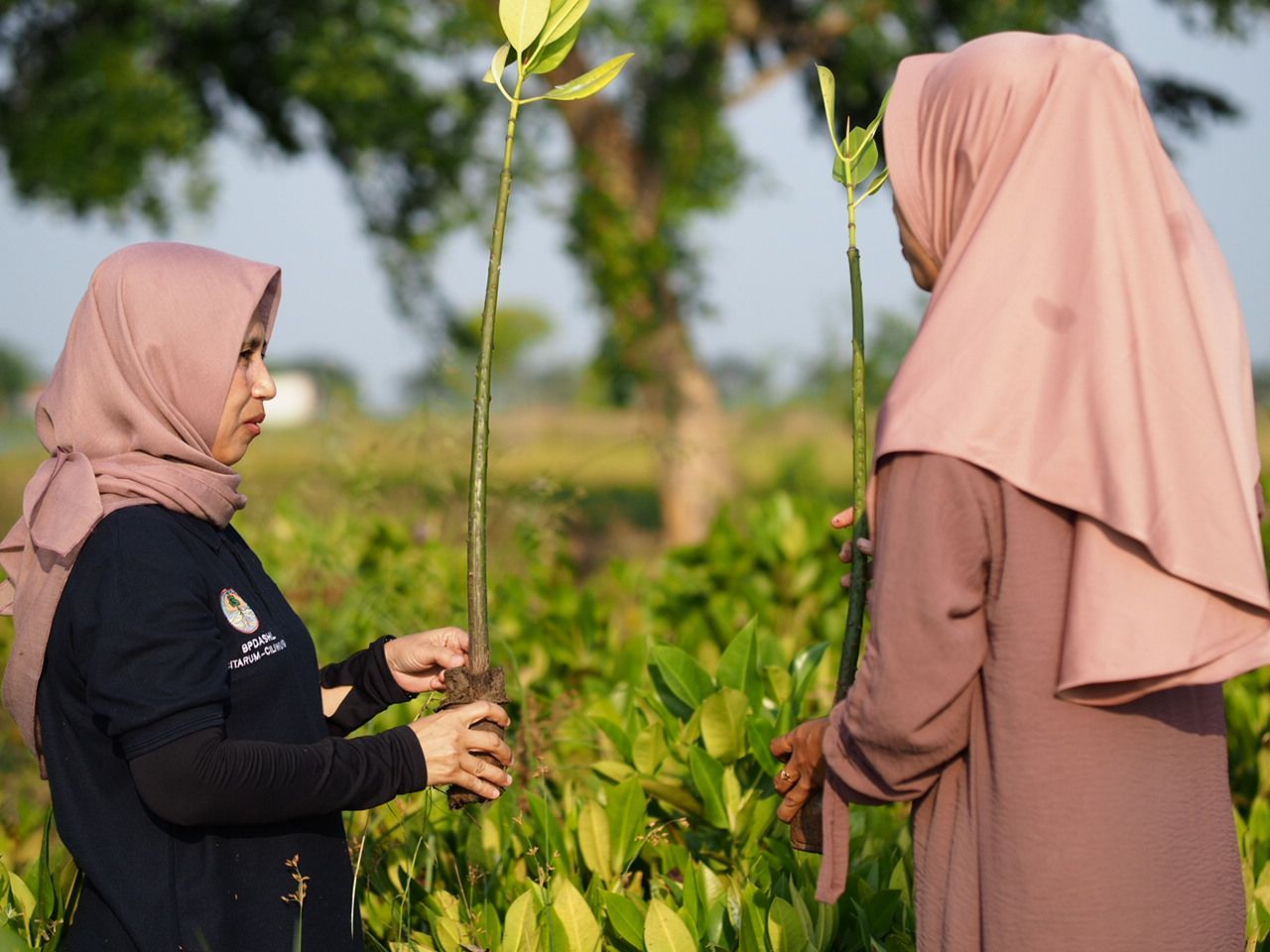
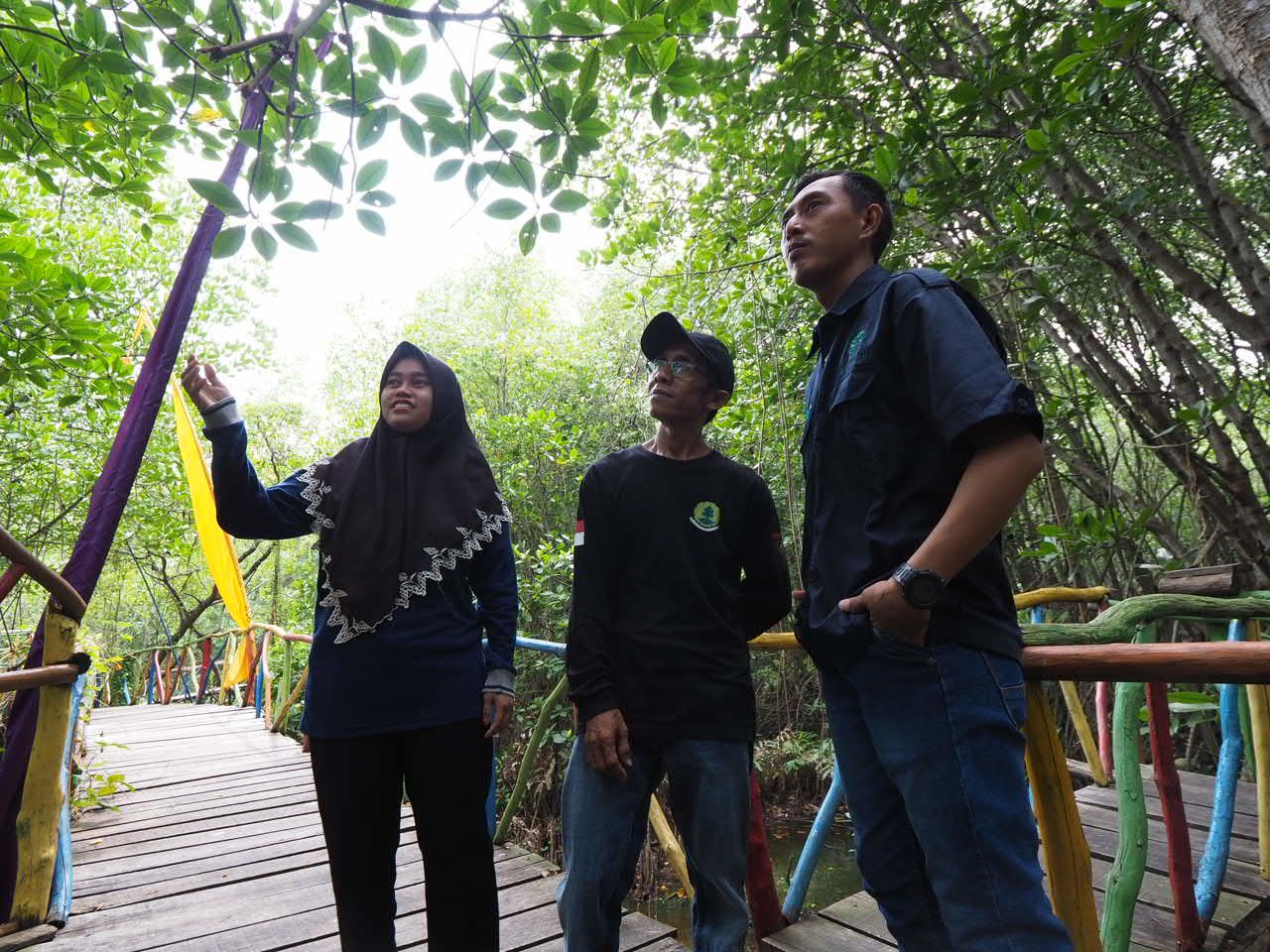
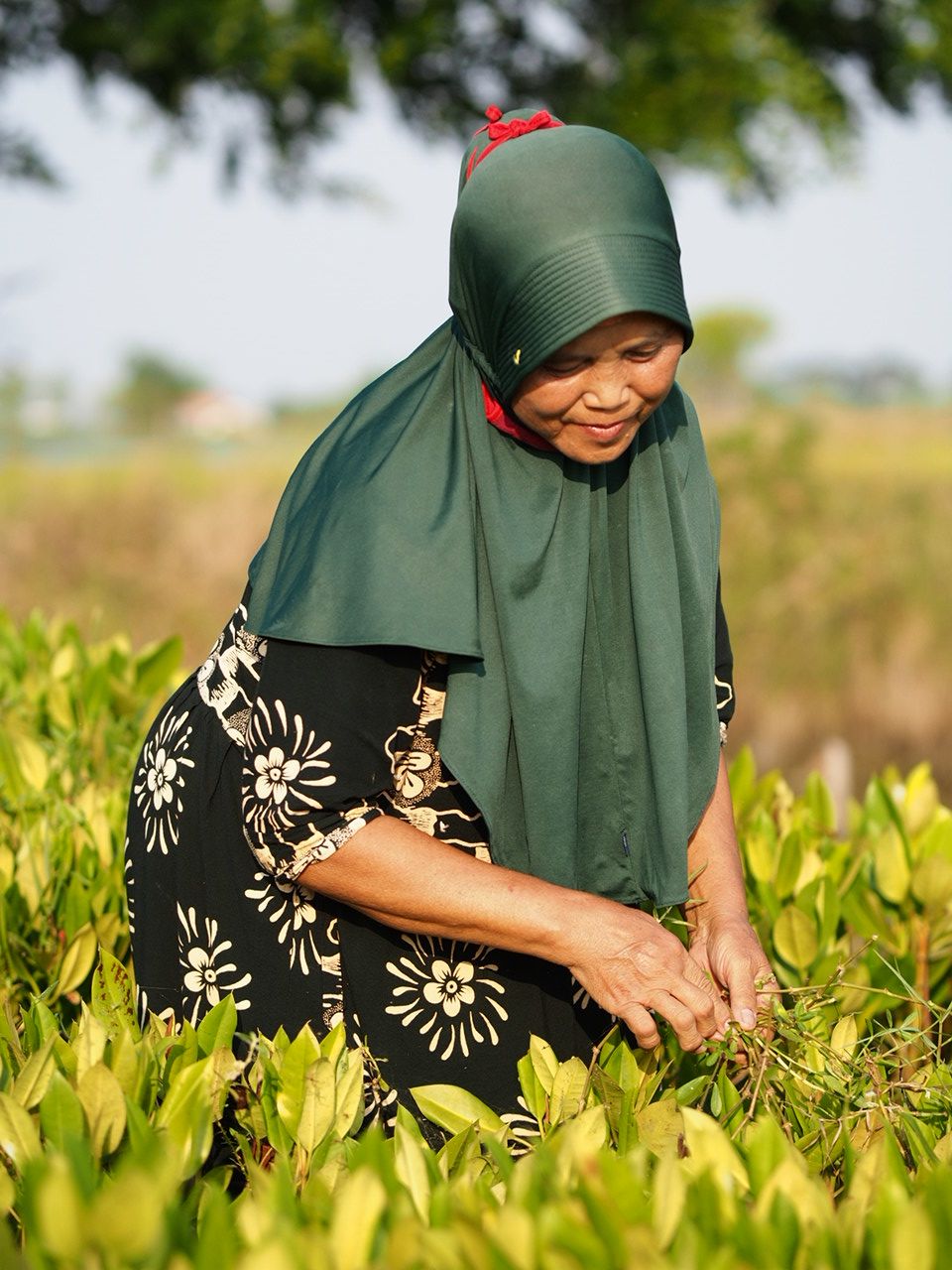
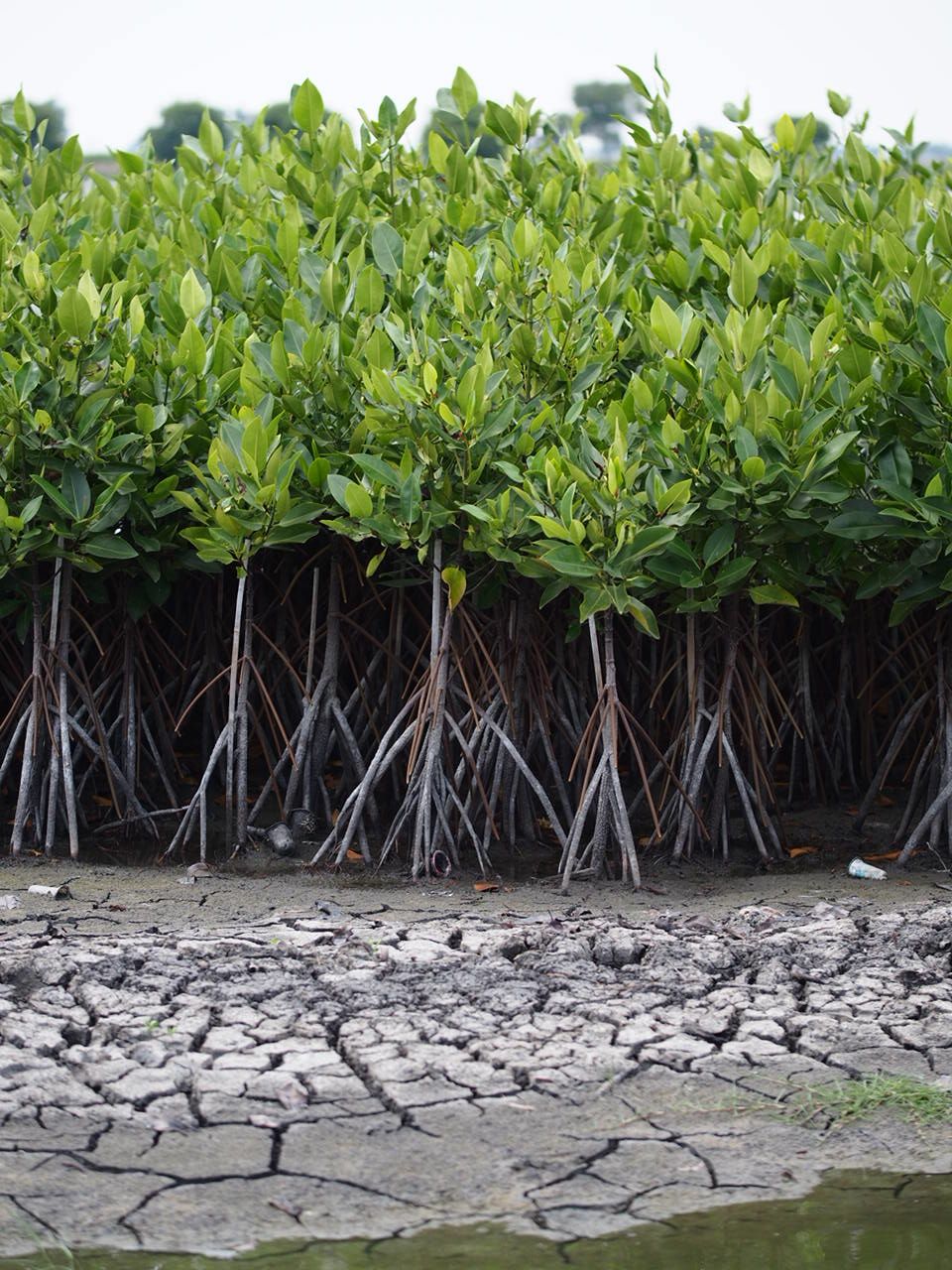
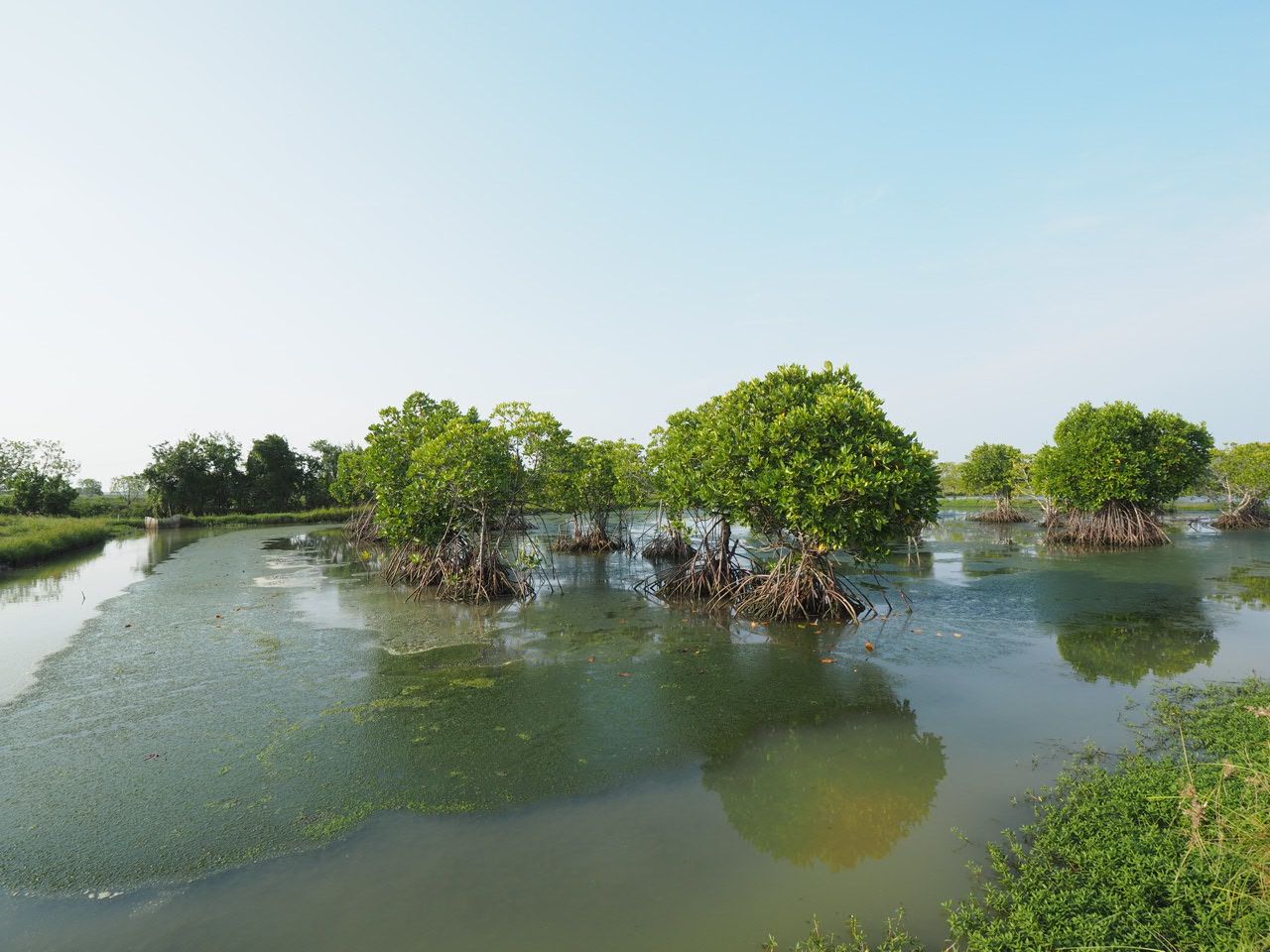
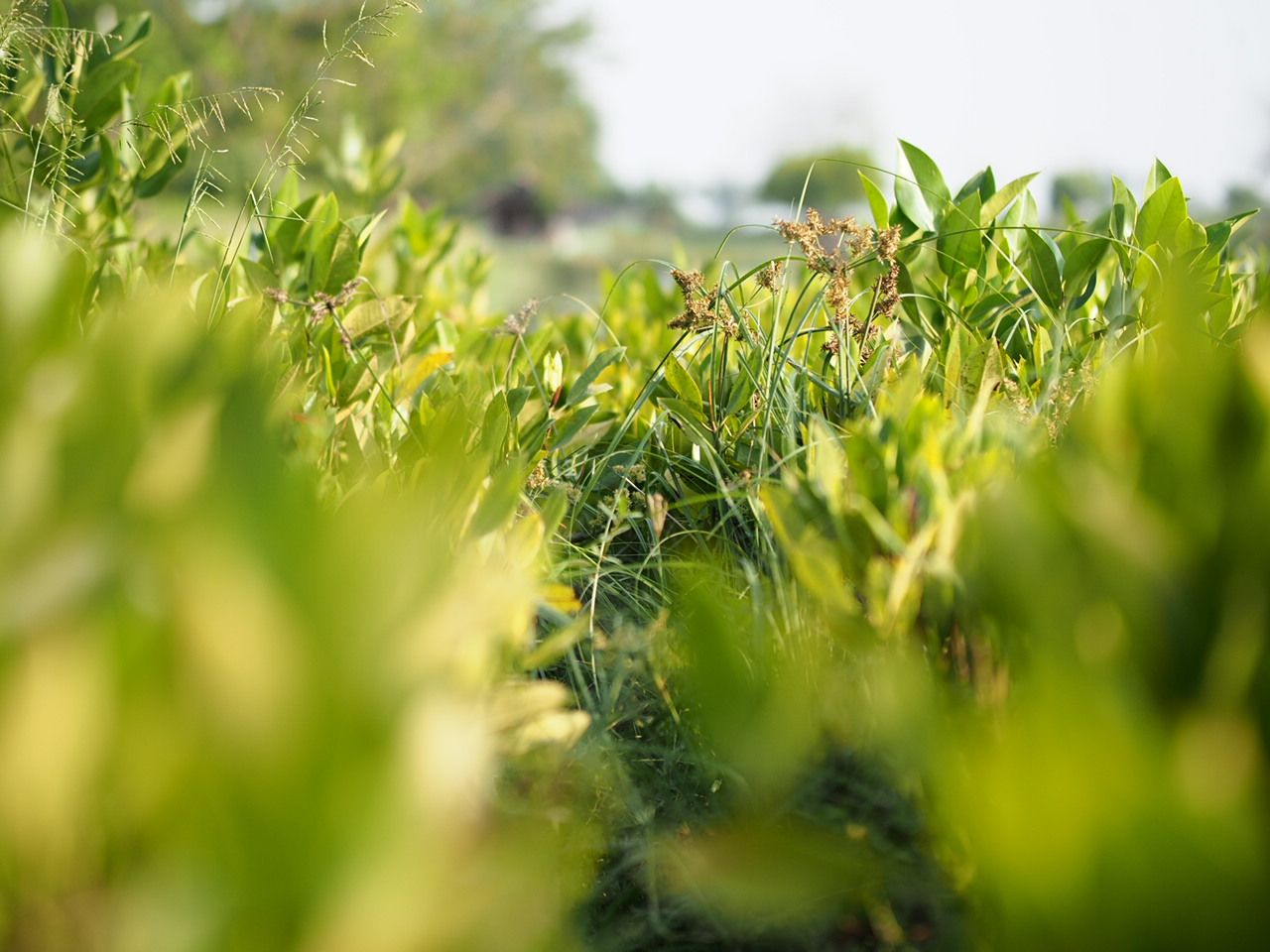

In Sedari village, collaborative efforts to rehabilitate mangroves already started under Suharto, the second Indonesian President, who inaugurated the restoration site in 1991.
In Sedari village, collaborative efforts to rehabilitate mangroves already started under Suharto, the second Indonesian President, who inaugurated the restoration site in 1991.







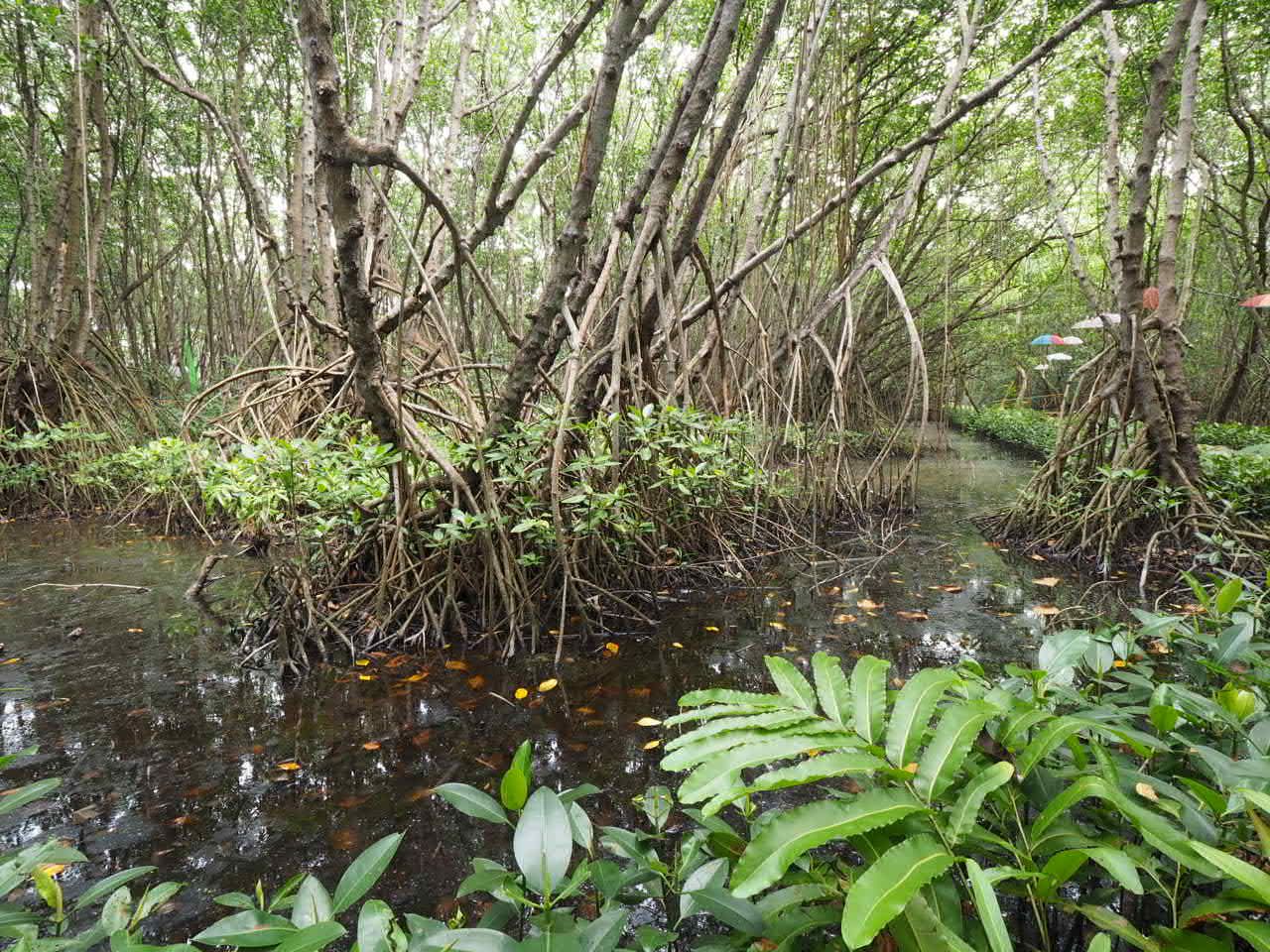
Since then, many lessons have been learnt: The experience of Sedari shows that mangrove ecosystems provide not only a nutrient-rich environment for fish and shrimp to grow, they also improve water quality in coastal areas thanks to their ability to filter pollutants. Healthy mangrove ecosystems are also the roots of resilience for coastal areas. Their complex and dense root systems contribute significantly to climate resilience by providing a natural barrier against the impacts of climate change, such as rising sea levels and extreme weather events. Additionally, mangroves act as efficient carbon sinks. The trees and the below ground biomass in mangrove ecosystems store large amounts of carbon. Preserving these ecosystems is key to mitigate climate change.
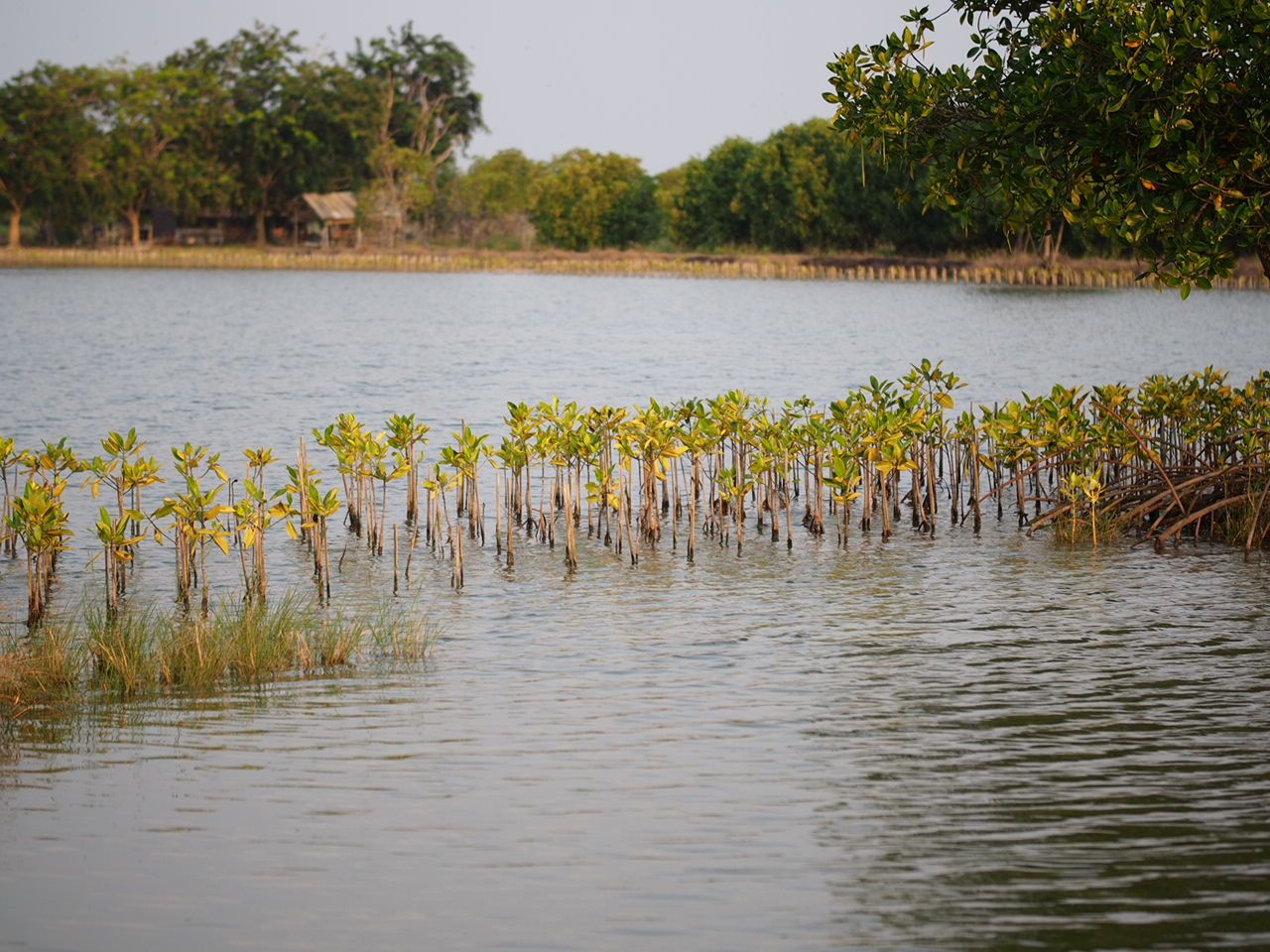
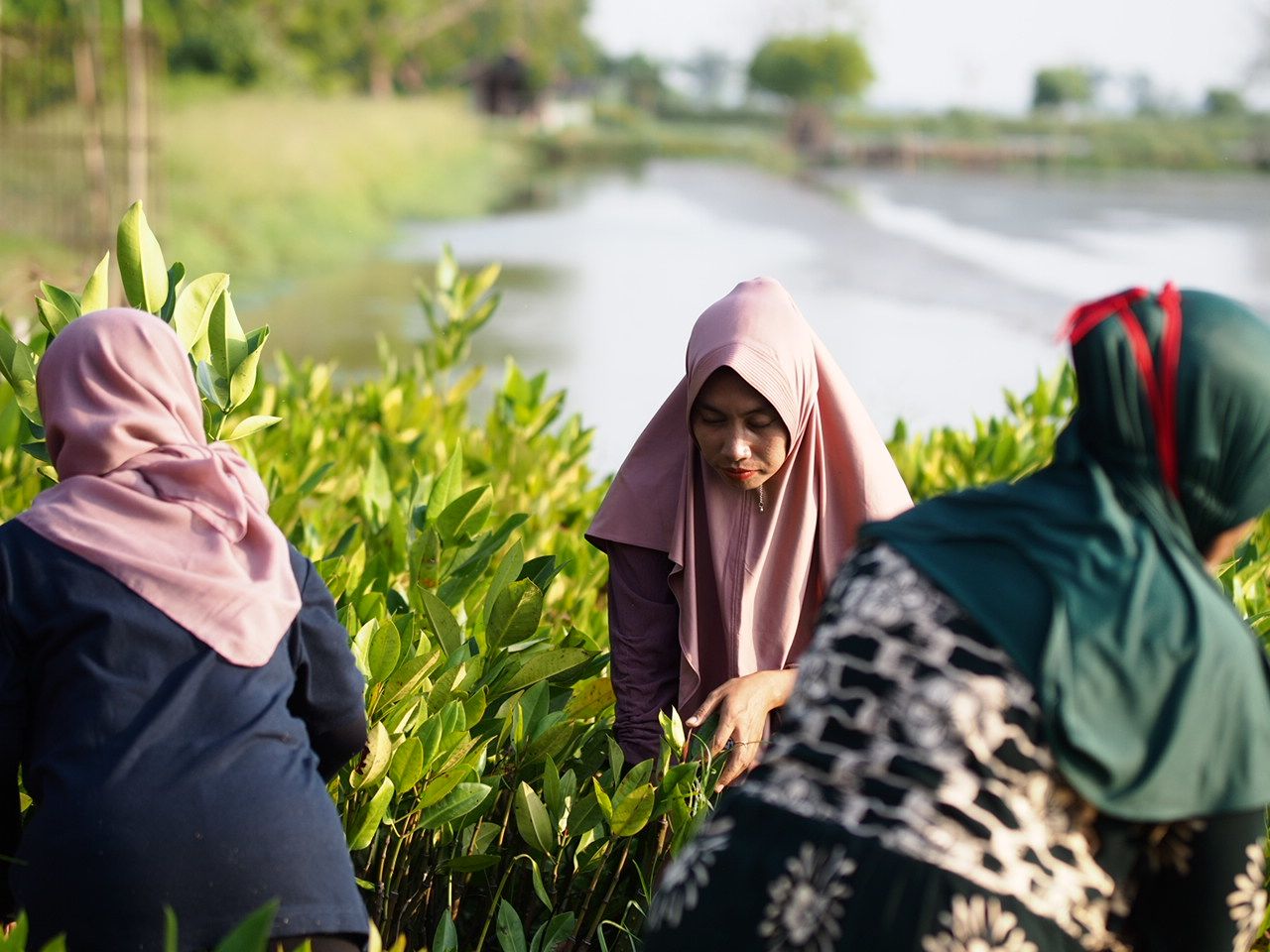
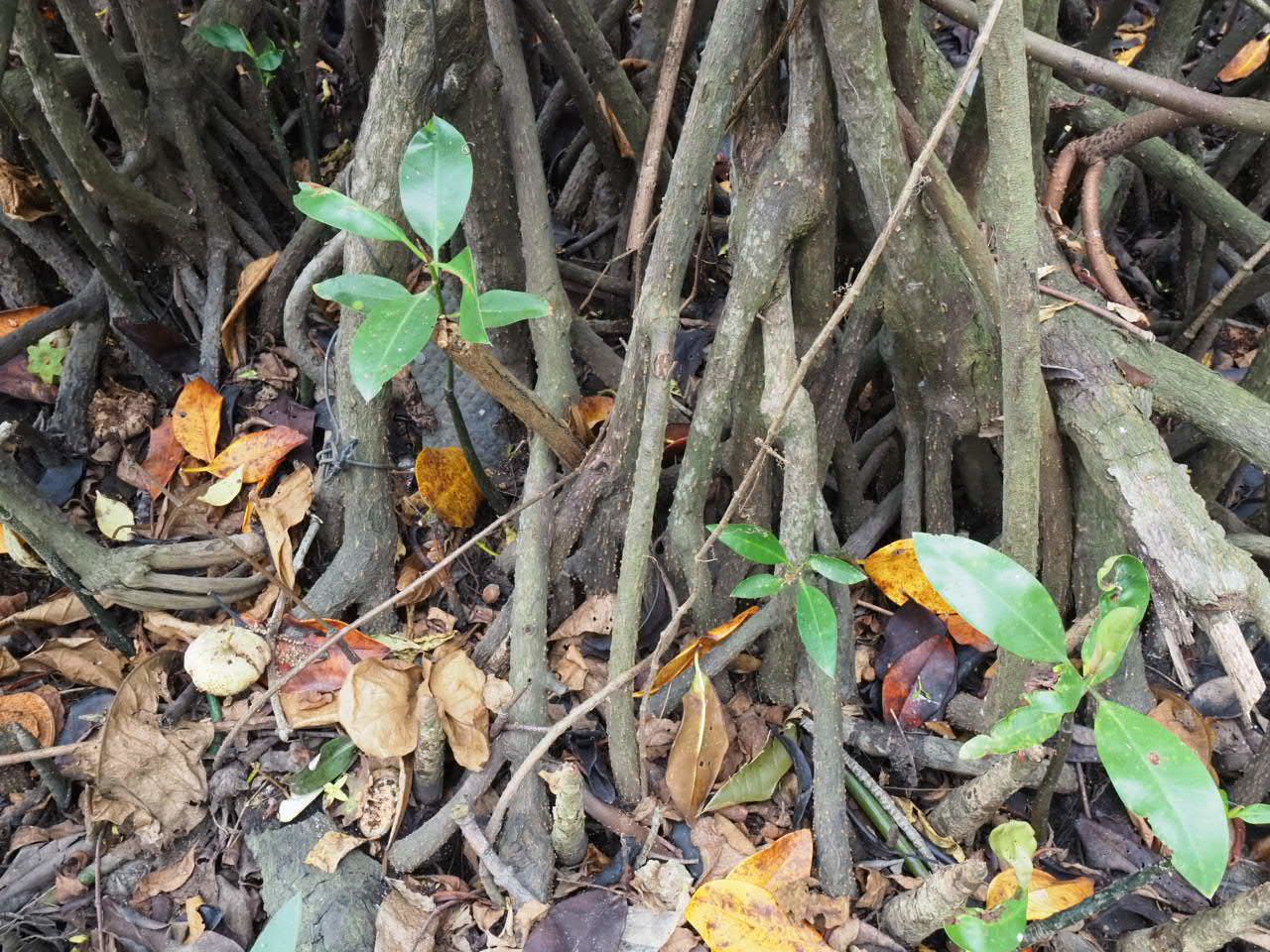
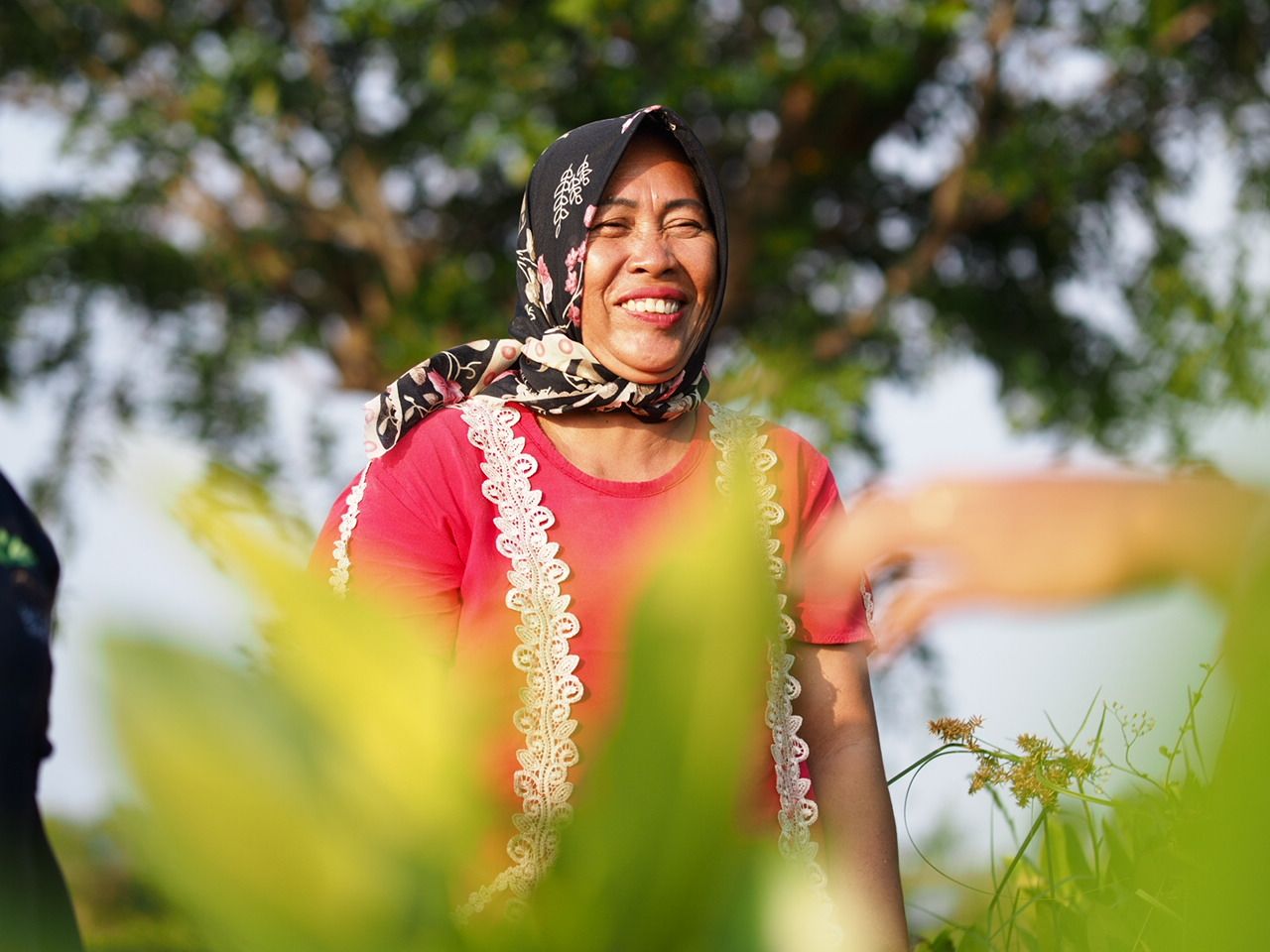
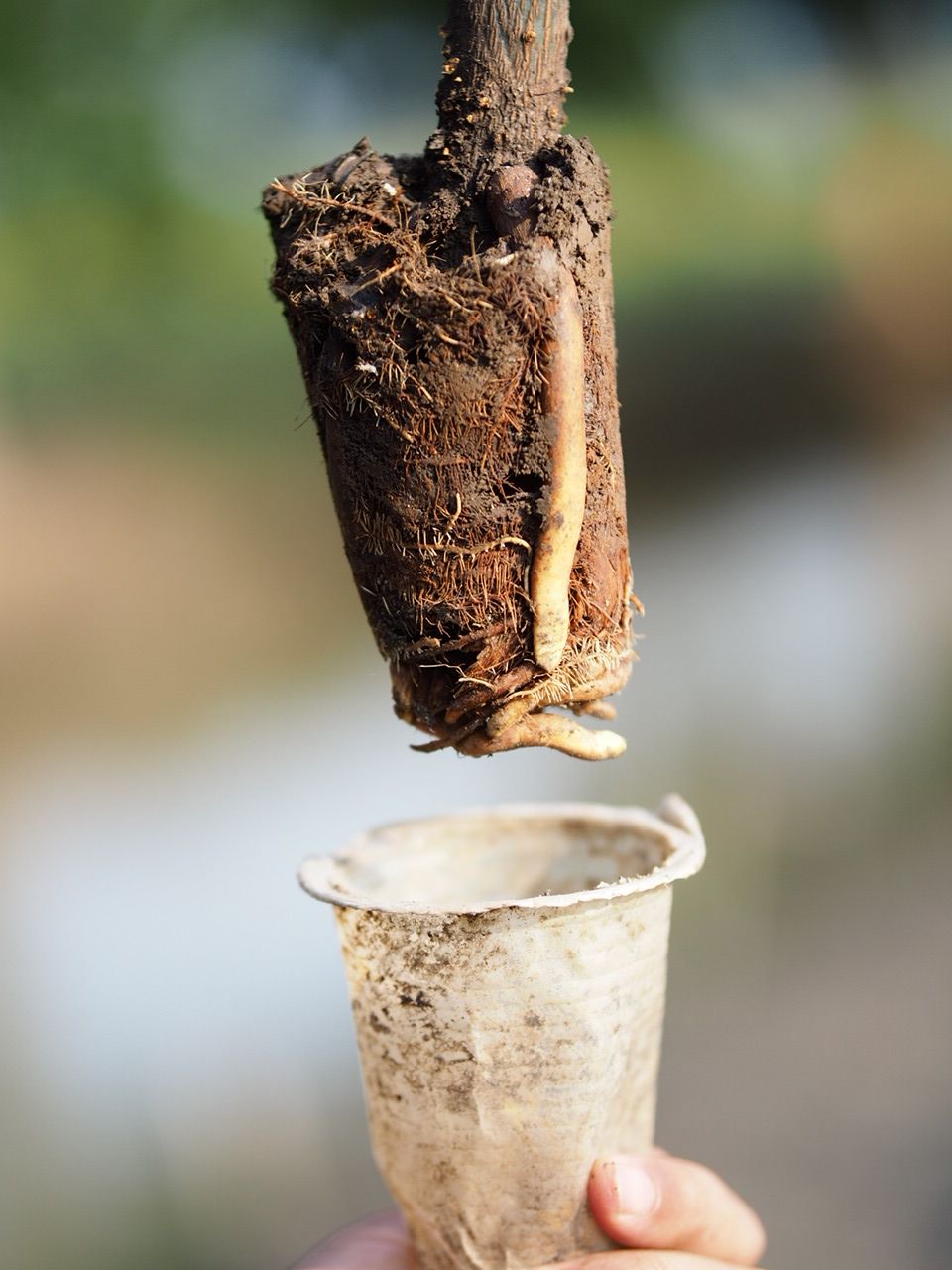
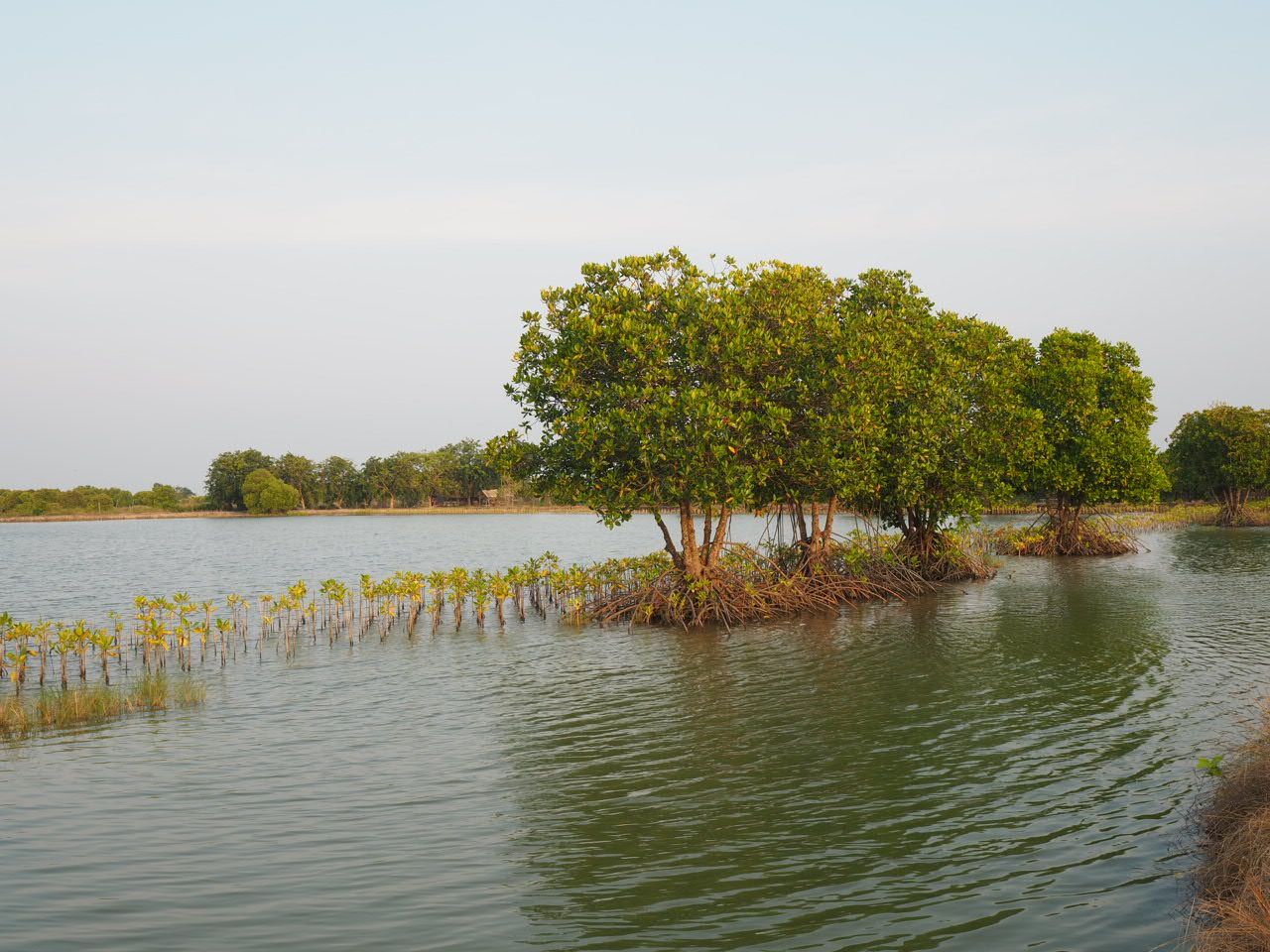

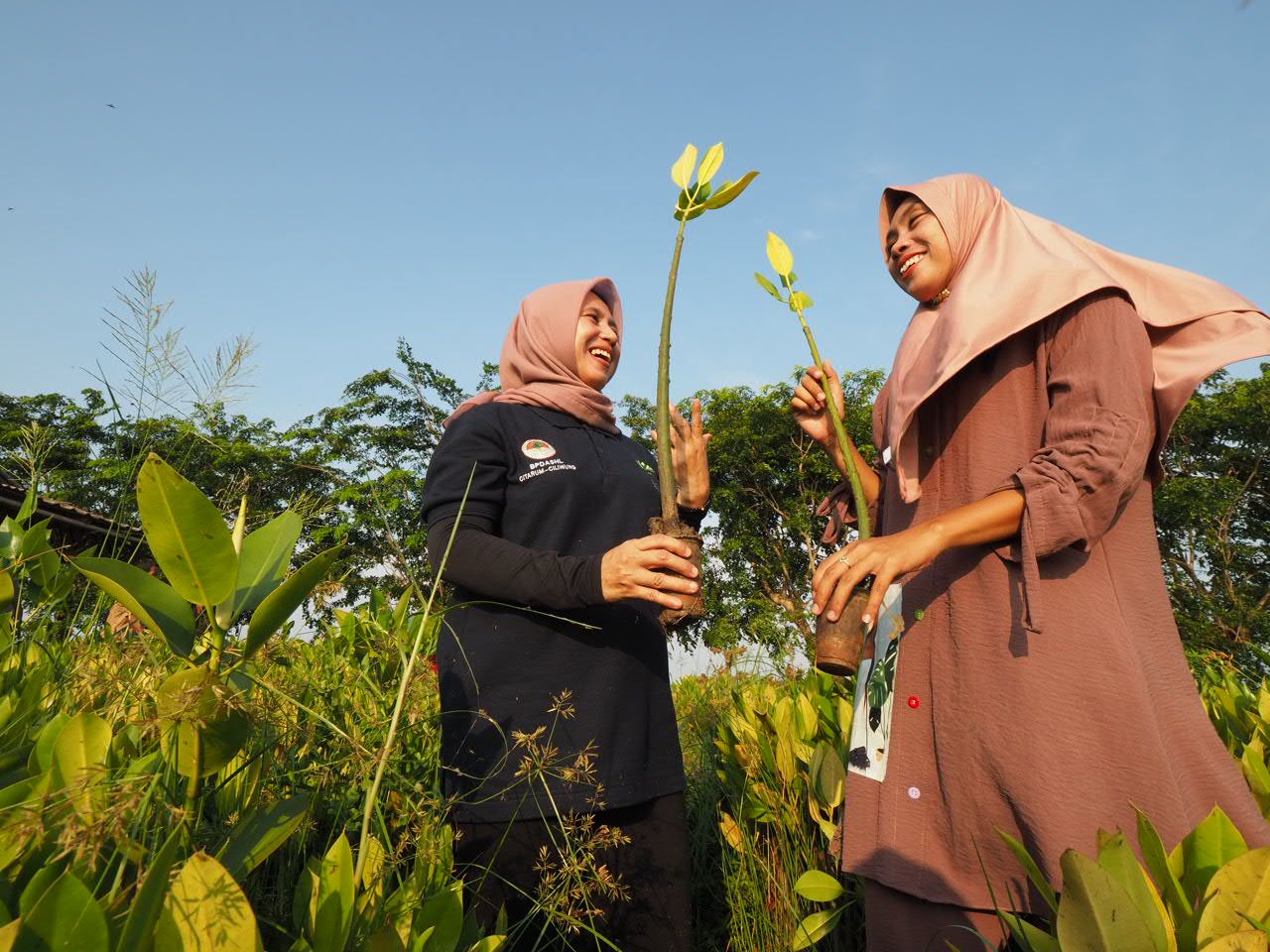
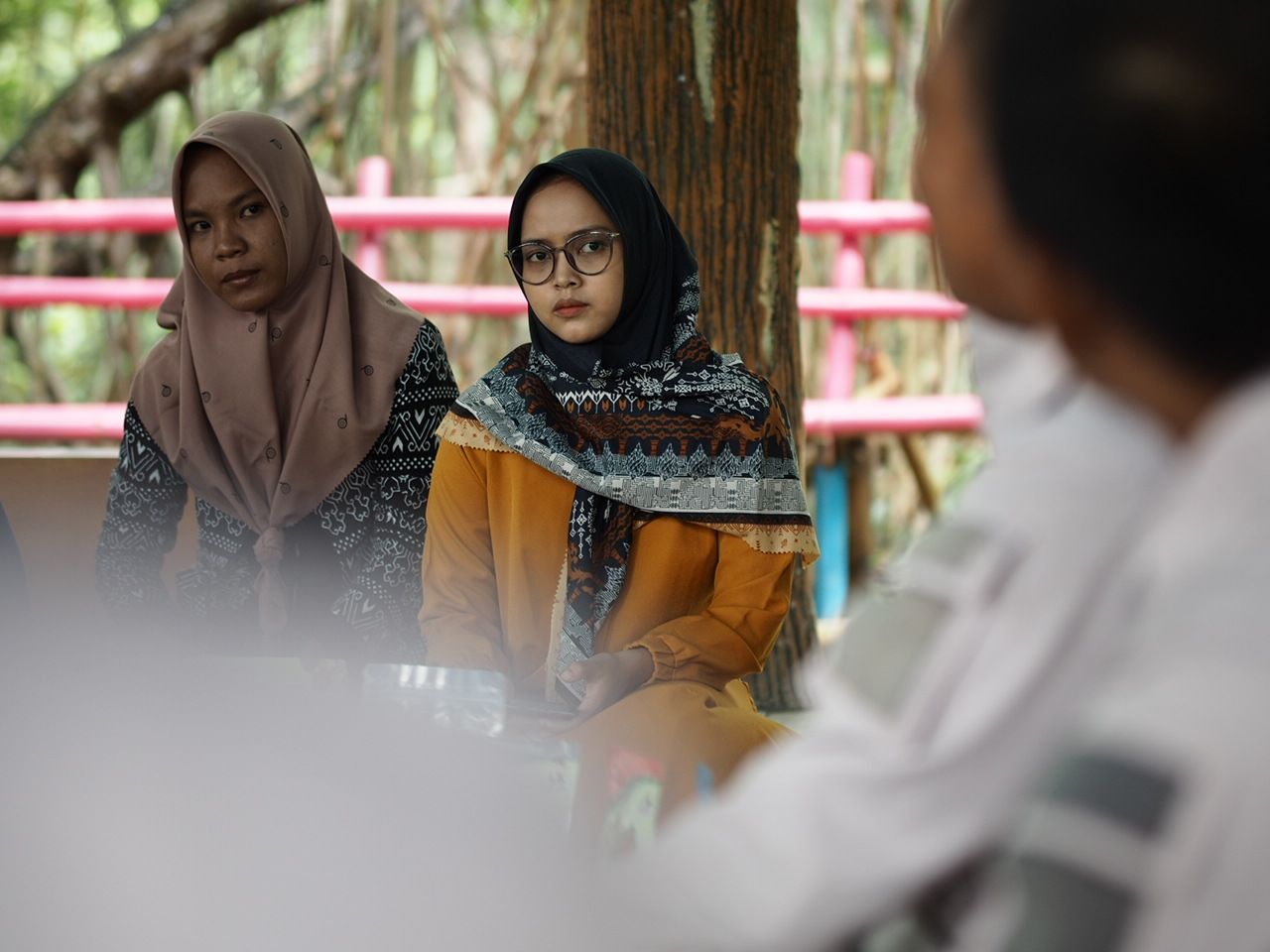
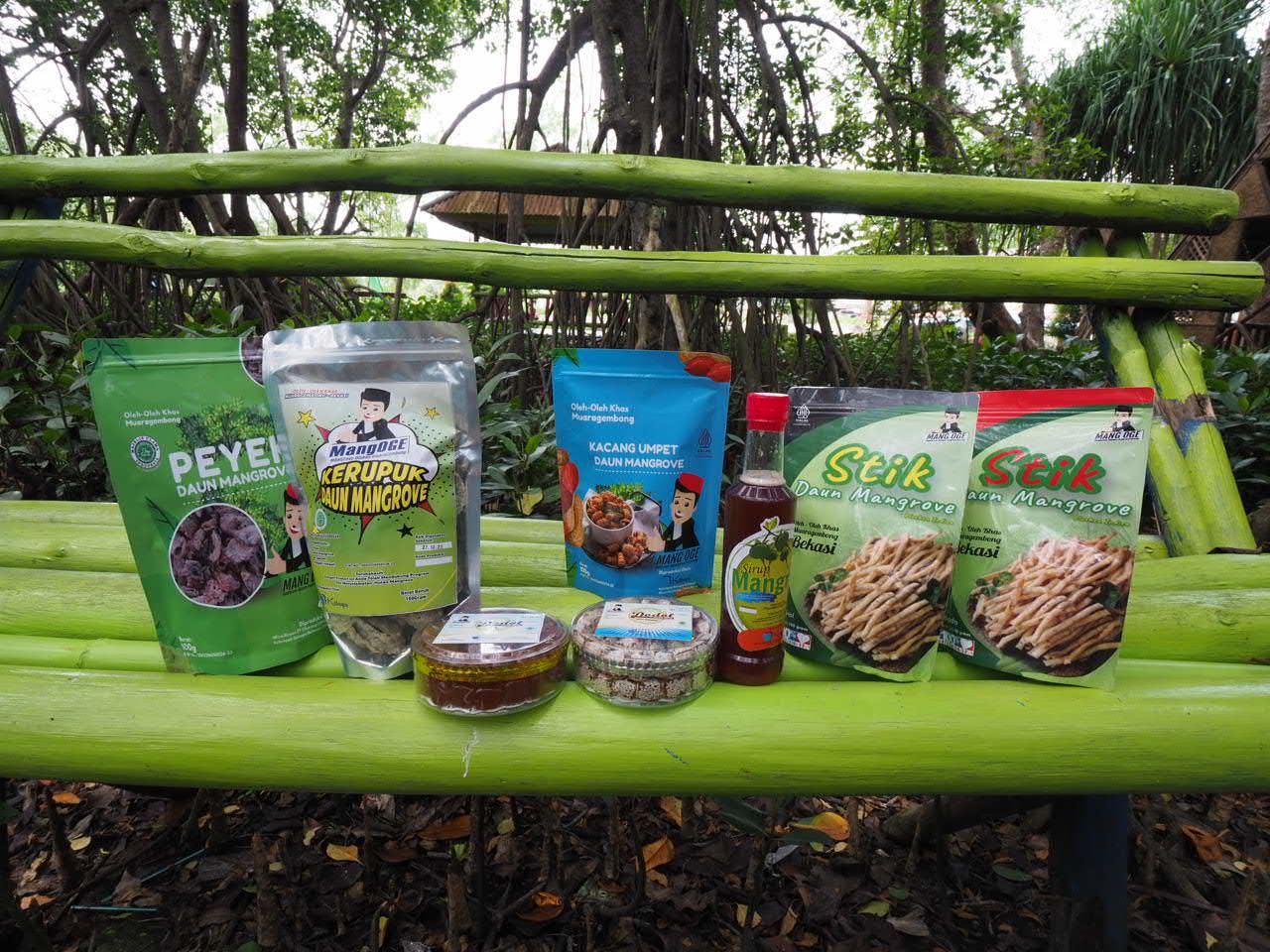
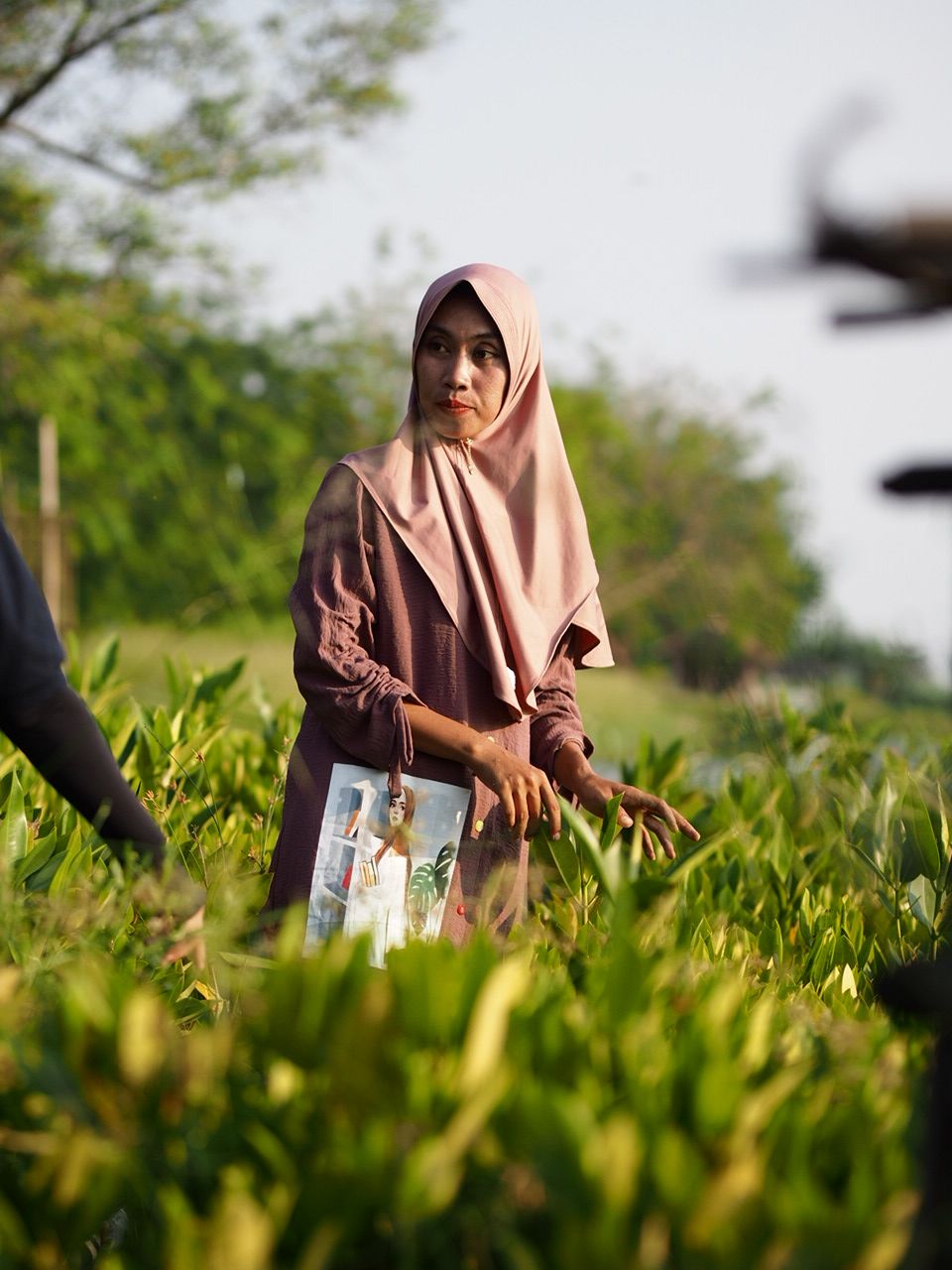











The rehabilitation of mangroves furthermore promotes economic resilience, not only through a better income generated from shrimp farming, but also through increased ecotourism opportunities and the marketing of non-timber forest products. As such, the ecosystem restoration also supports the local community in the production of mangrove products, such as crackers made from starch extracted from young mangrove leaves, as well as syrups and candies made from mangrove fruits sold locally to visitors.
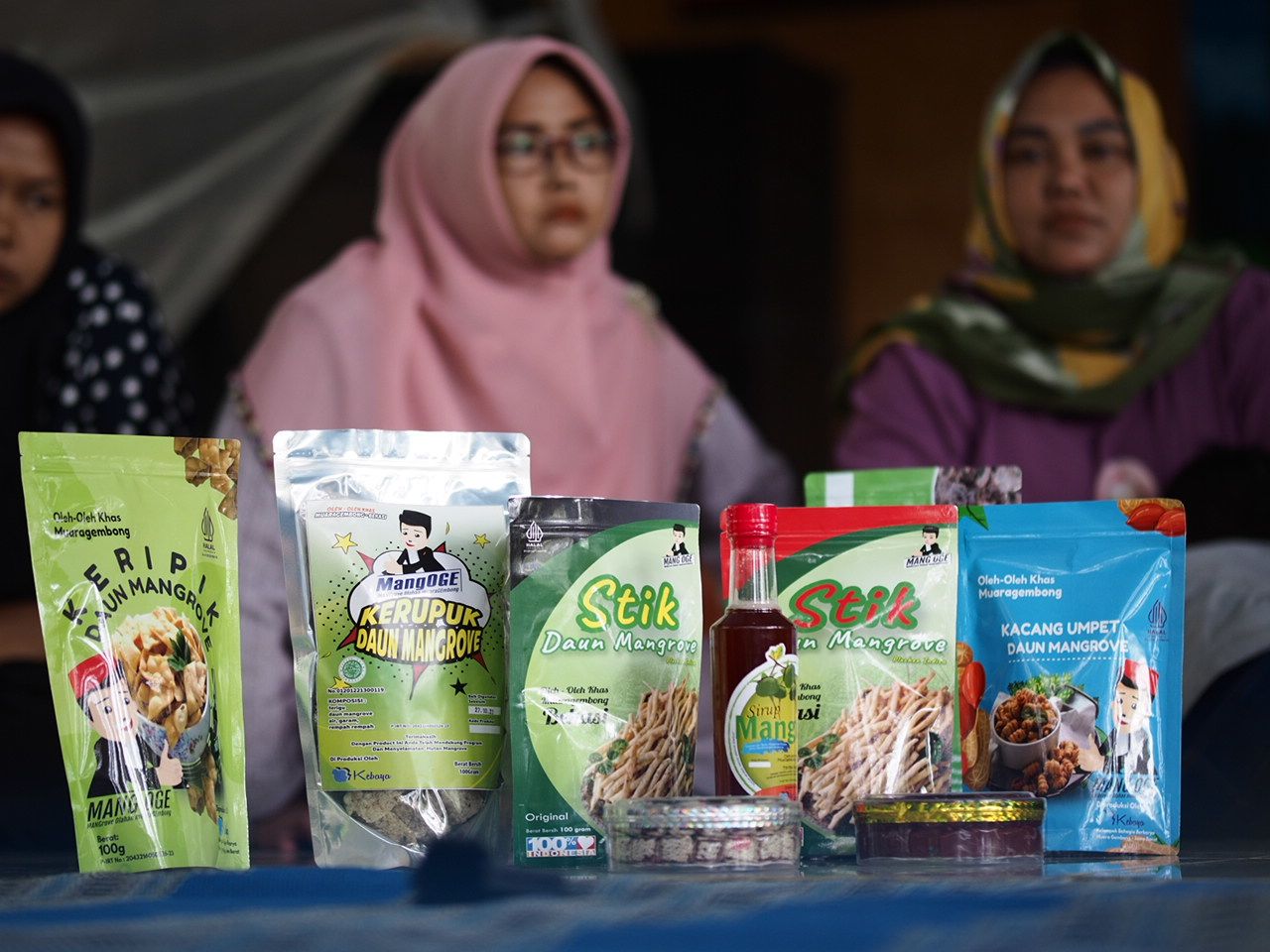
The rehabilitation of mangroves furthermore promotes economic resiliency, not only through a better income generated from shrimp farming, but also through increased ecotourism opportunities and the marketing of non-timber forest products. As such, the ecosystem restoration also supports the local community in the production of mangrove products, such as crackers made from starch extracted from young mangrove leaves, as well as syrups and candies made from mangrove fruits sold locally to visitors.
The rehabilitation of mangroves furthermore promotes economic resiliency, not only through a better income generated from shrimp farming, but also through increased ecotourism opportunities and the marketing of non-timber forest products. As such, the ecosystem restoration also supports the local community in the production of mangrove products, such as crackers made from starch extracted from young mangrove leaves, as well as syrups and candies made from mangrove fruits sold locally to visitors.
The road to rehabilitation
In 2019, the Indonesian government continued the restoration of mangroves in Sedari village. Since then, almost 130 hectares of mangroves have been rehabilitated.
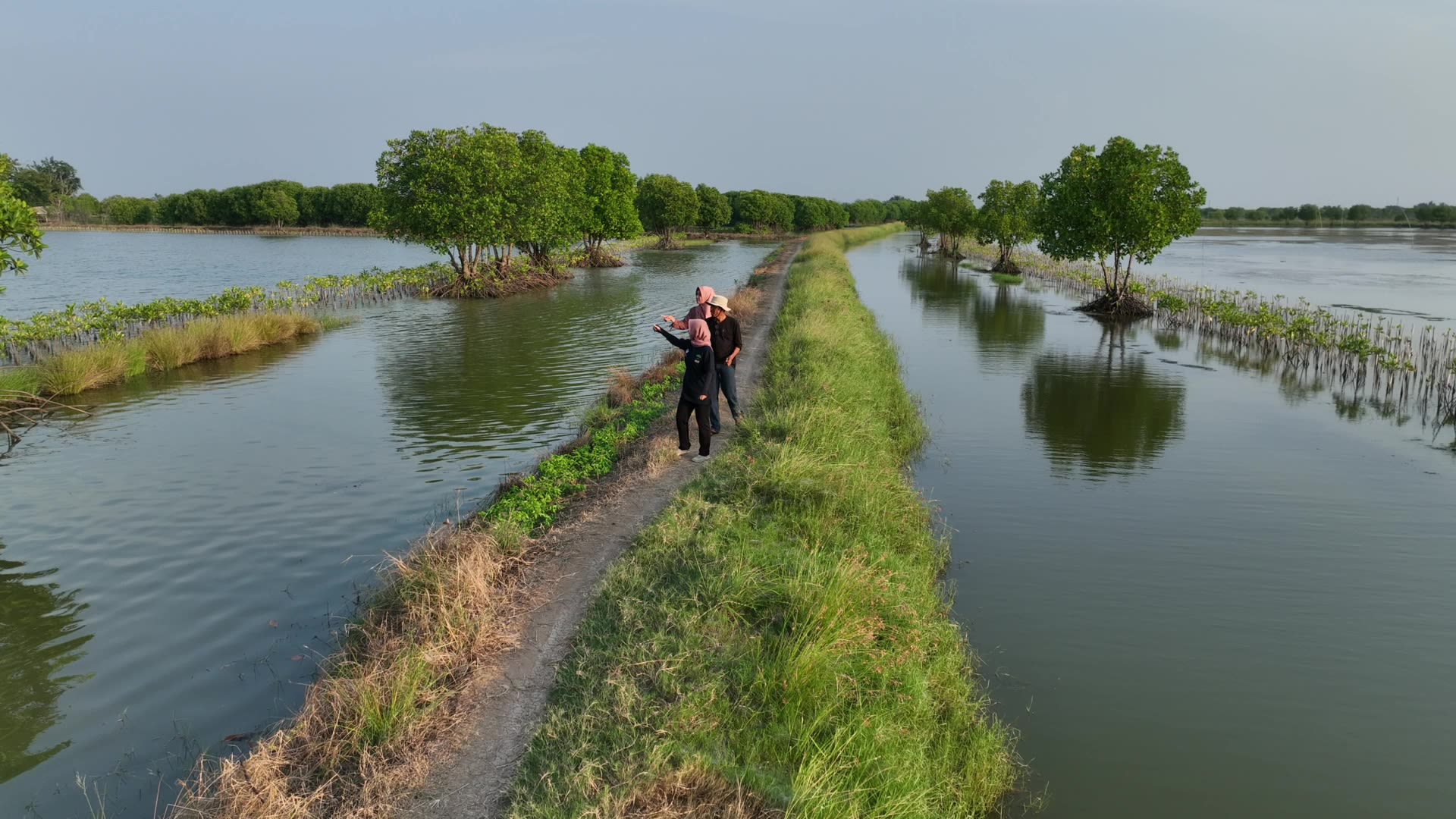
Dian Rahmawati, a government officer in charge of mangrove rehabilitation has a long-term vision: “Our target for mangrove rehabilitation is more than 600,000 hectares, covering 9 priority provinces in Indonesia. So our main role here is to provide funding and regulations for these activities. Additionally, we also have a primary role as the custodians of the data, to improve the management of the mangrove ecosystems.”
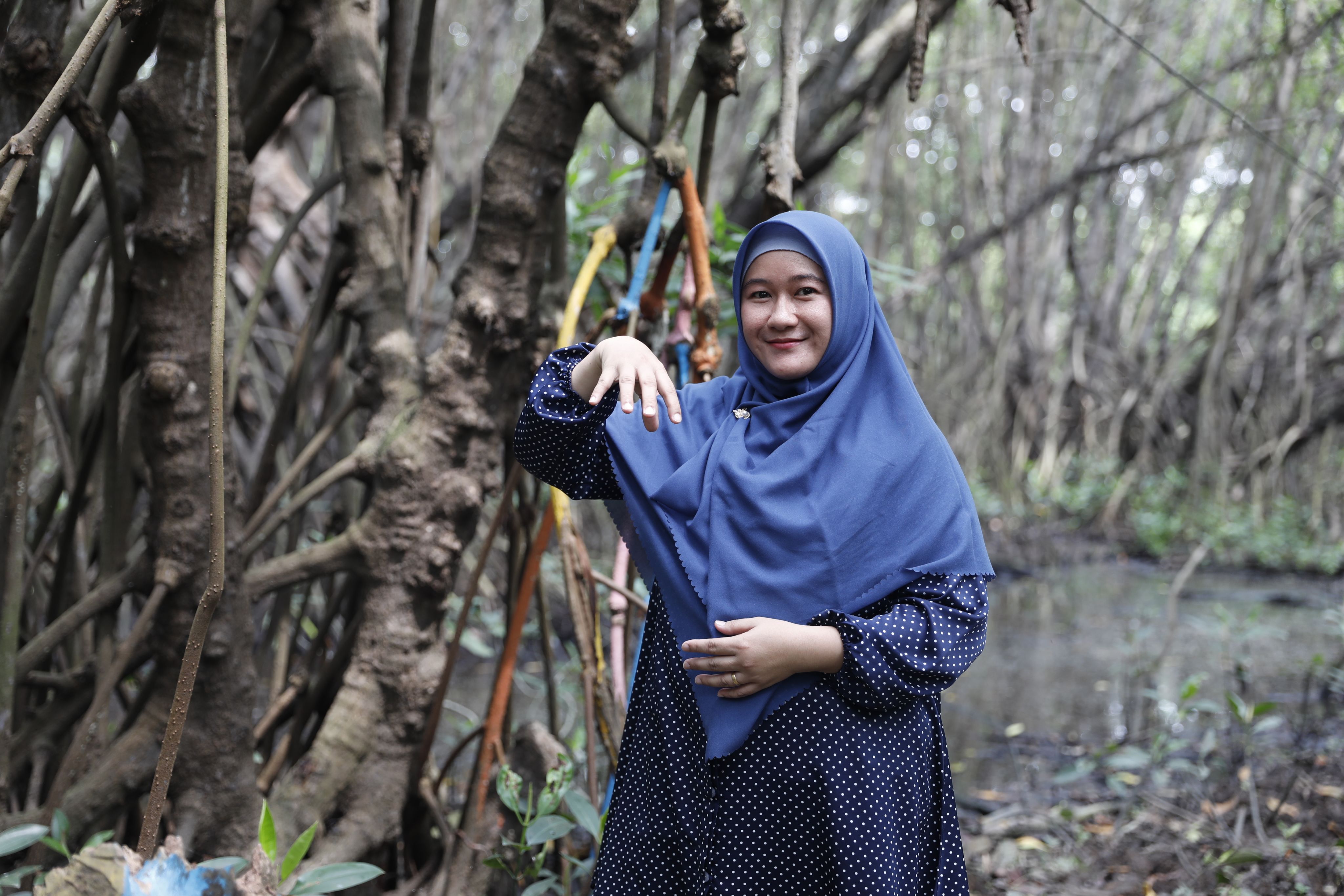
Data plays a pivotal role in every stage of mangrove rehabilitation, from planning and implementation to monitoring and adaptive management. This is even more important as mangrove rehabilitation faces a variety of practical challenges, from determining proper hydrological conditions such as tidal patterns and salinity and choosing the right species on the site conditions to proper monitoring and maintenance.
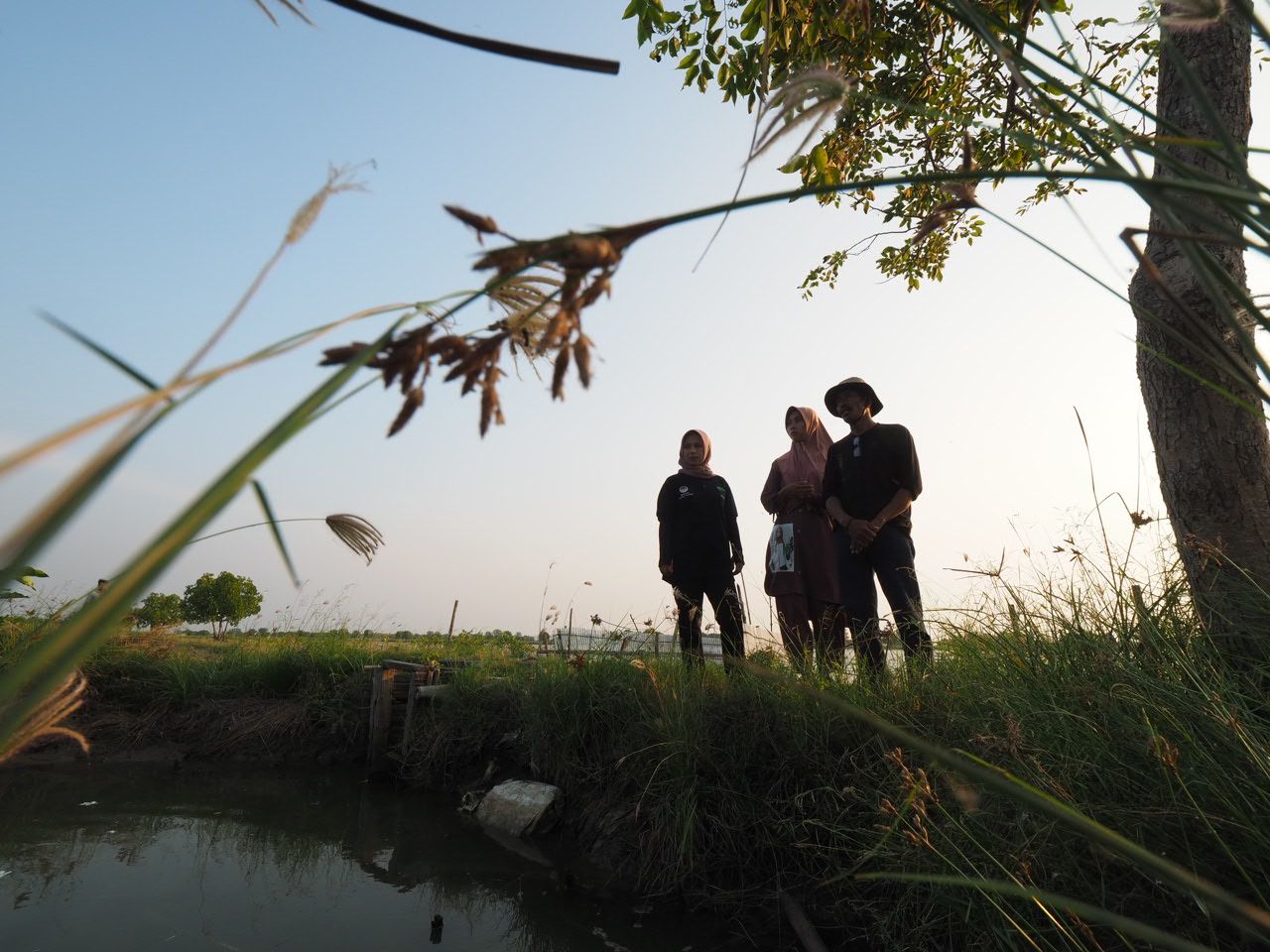
For village head Bisri Mustofa, a high level of community involvement is key to the project’s success: “Since we want to encourage the development of our village, I want the mangroves to be seen as a significant environmental and economic value. “Healthy mangroves are at the heart of Mustofa’s dream: “I envision a future where flourishing mangrove plantations are celebrated as an enchanting garden, drawing visitors and bringing economic prosperity to our village.”
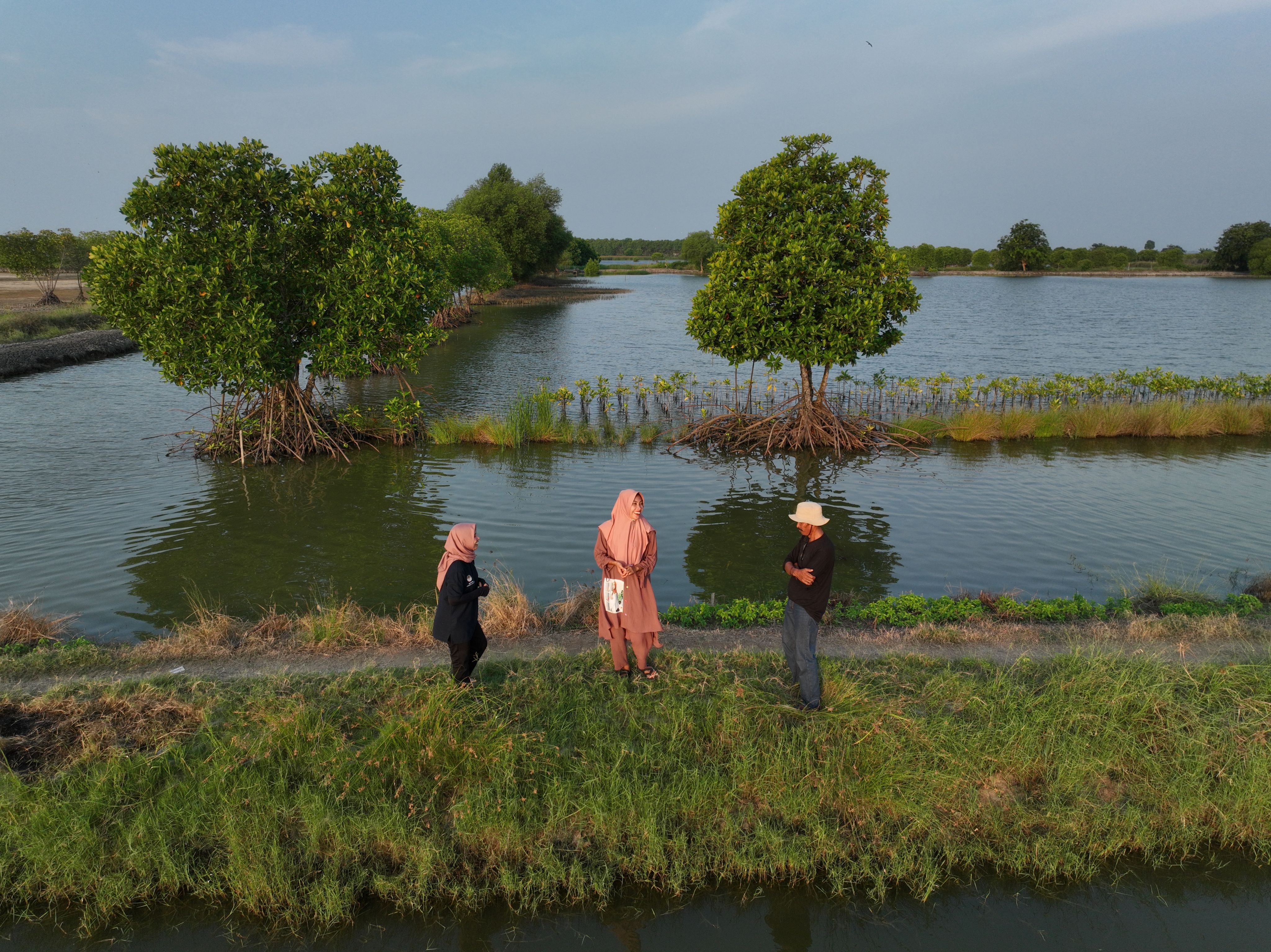
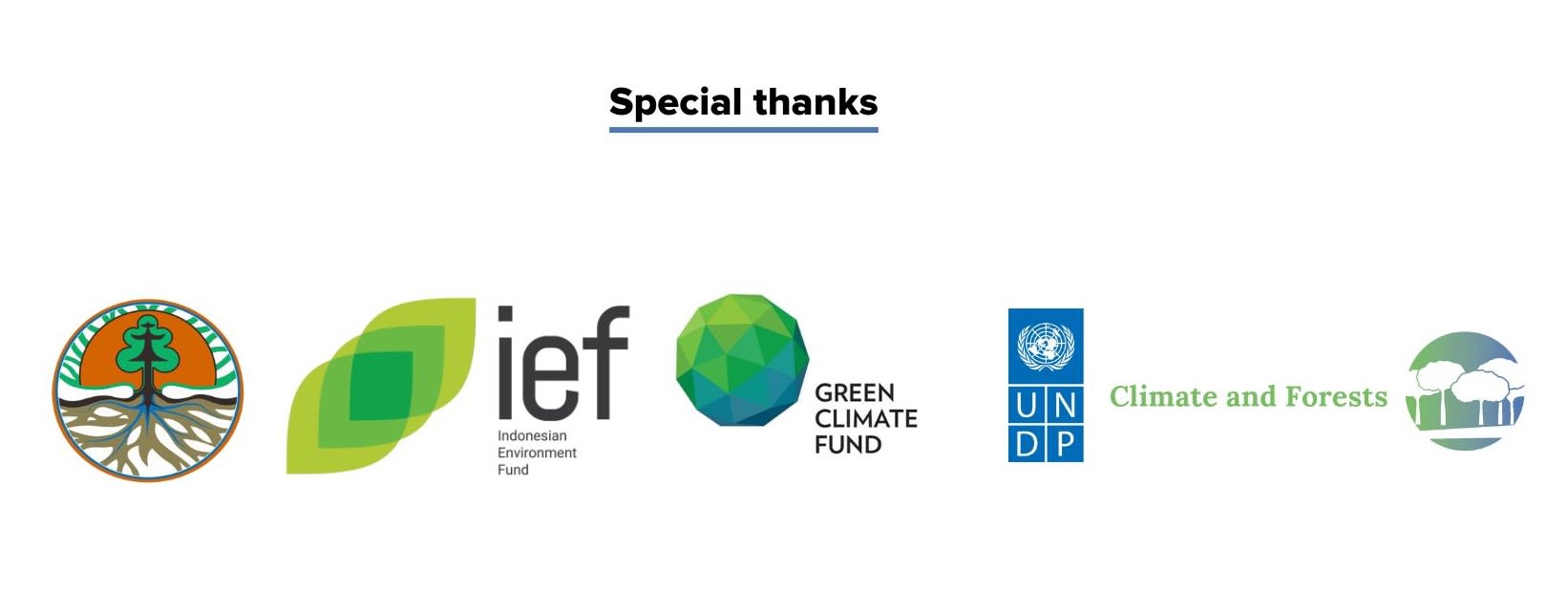
Additional information:
Indonesia is home to the world’s third largest tropical rainforest, harboring a rich biodiversity and cultural heritage. Between 2014 and 2016, Indonesia reduced its emissions from deforestation and forest degradation. The Green Climate Fund rewarded these emissions reductions with $103.8 million US in results-based payments in 2020. The funds are crucial to achieve the country’s Nationally Determined Contribution (NDC). Pivotal to achieve Indonesia’s climate goals, the Forest and Other Land Use (FOLU) Net Sink Plan follows 3 priorities:
1. Social forestry, which grants local communities the rights to manage and benefit from forest resources, promoting sustainable practices and biodiversity conservation
2. Forest and peatland rehabilitation and restoration to enhance biodiversity, reduce greenhouse gas emissions, and promote community engagement
3. Forest fire management, a multi-faceted approach to prevent, control, and mitigate the impact of wildfires
Learn more about Indonesia´s REDD+ Results-Based Payments (RBP) project and lessons learned from the initial application of UNDP's Performance-Based Payment Policy in Indonesia
Videography & Photography: UNDP Indonesia / Roy Prasetyo | Story, Video & Visual layout: Roxana Auhagen | Collaboration: Hafizh Zhafran | Social Media: Sila Alici Kavuk
